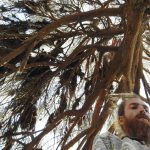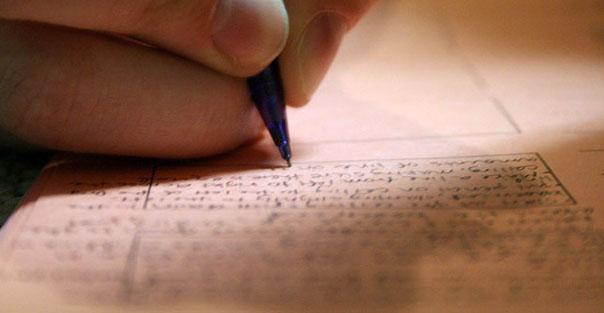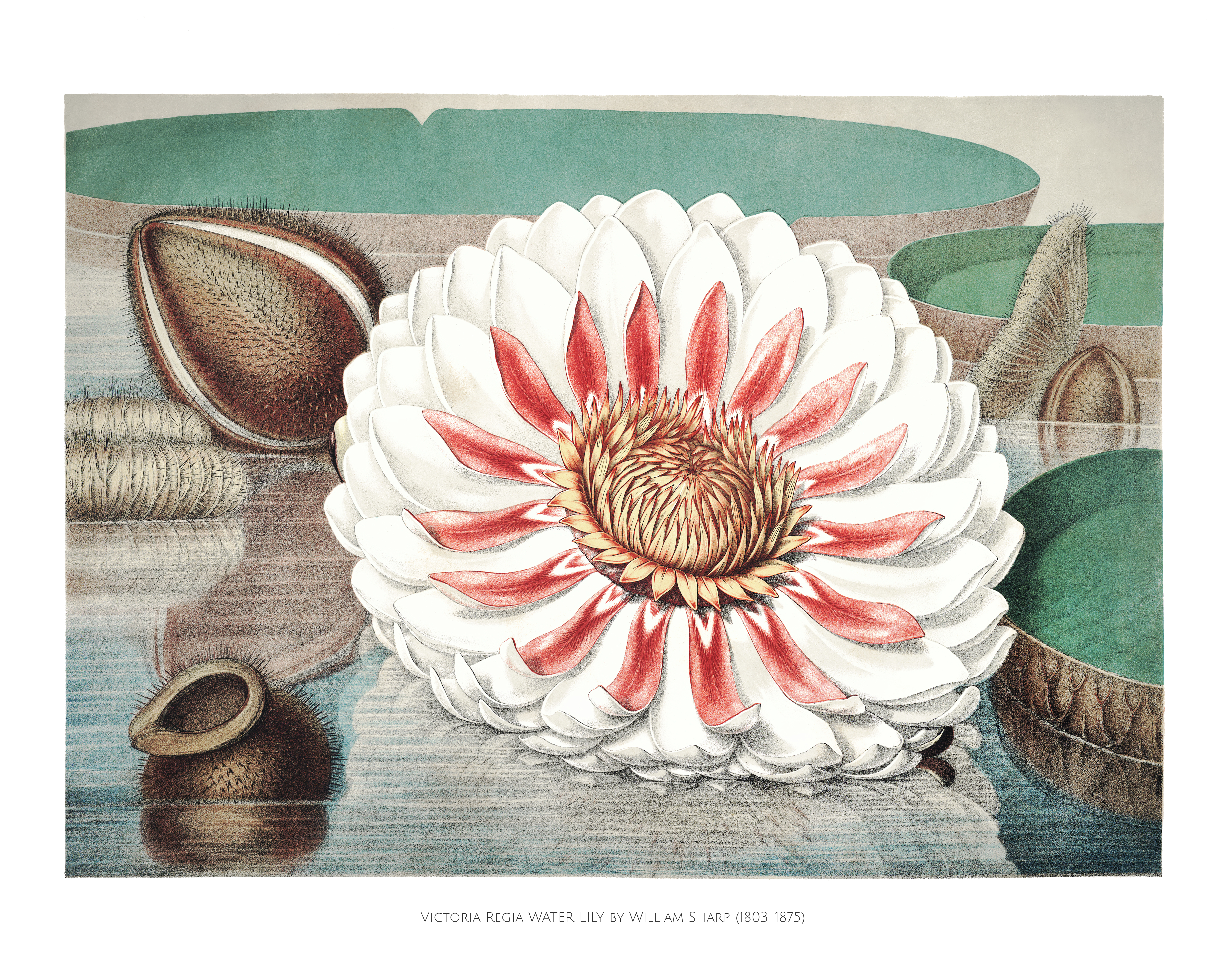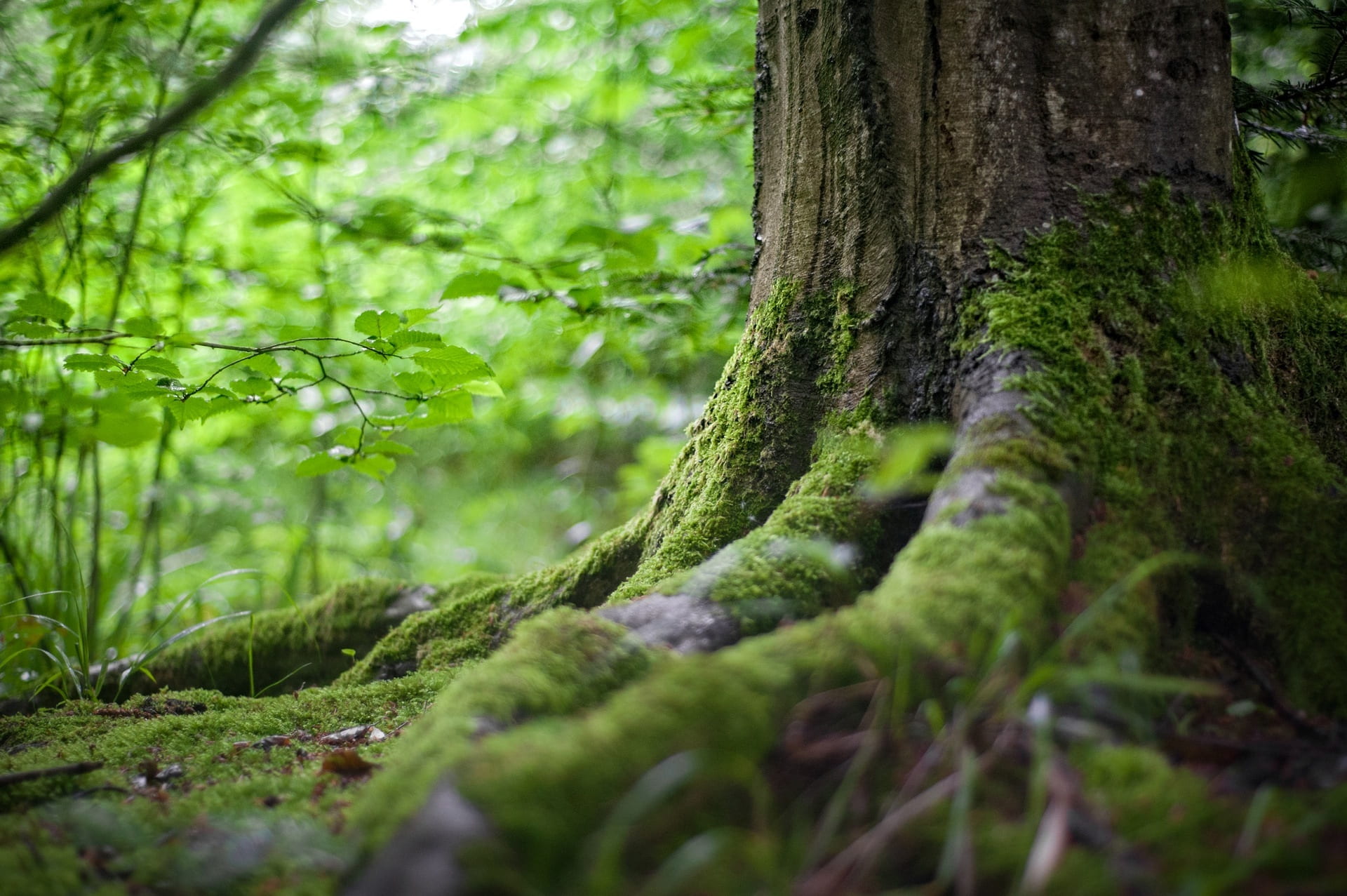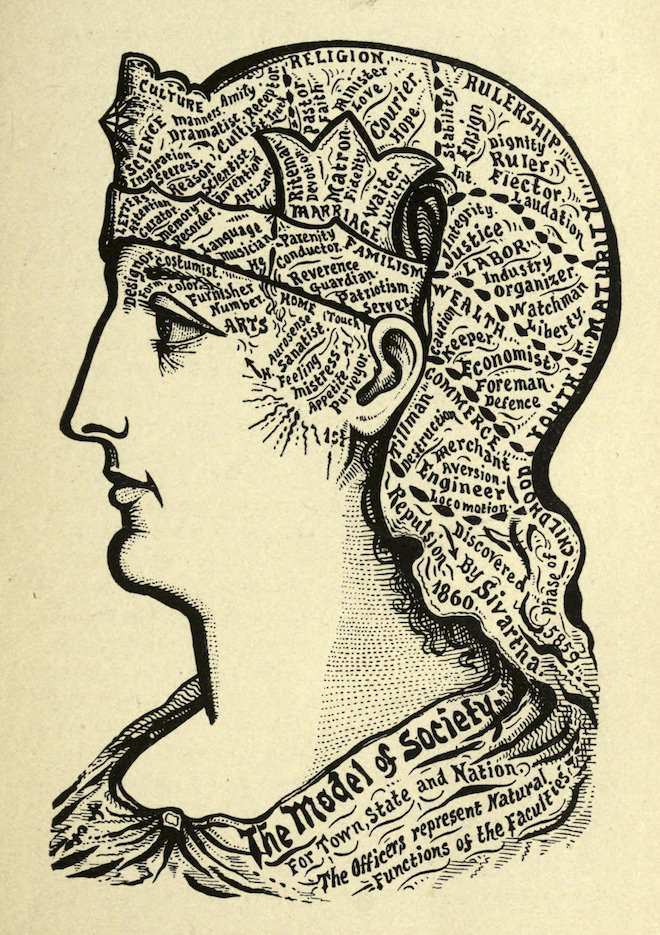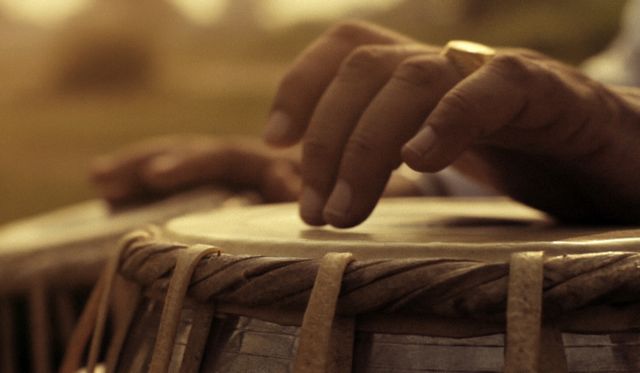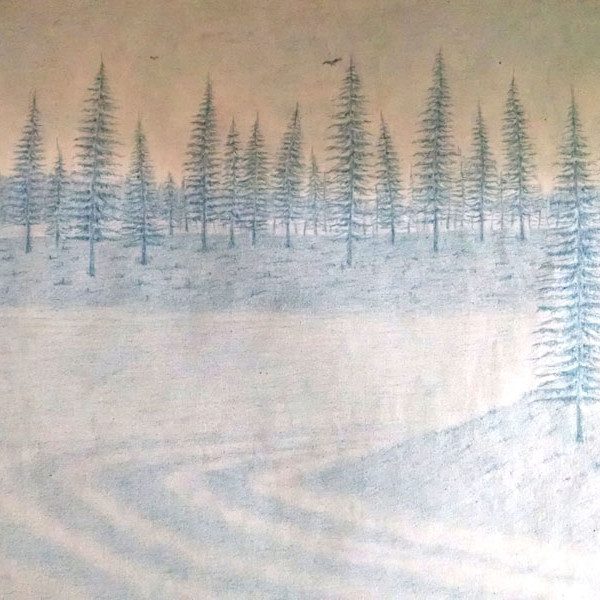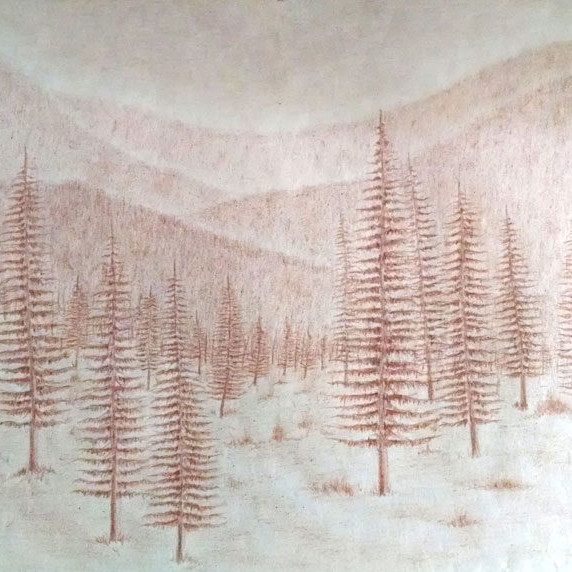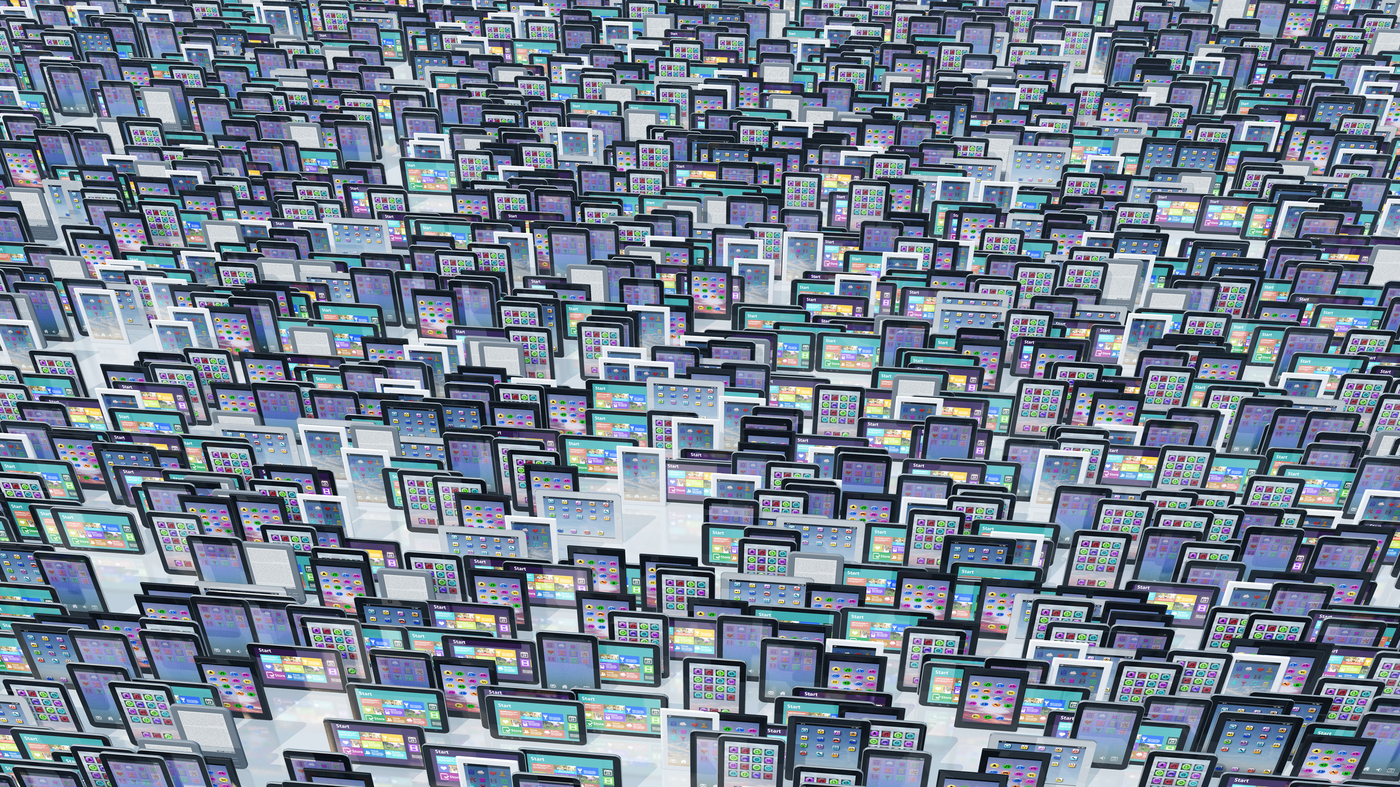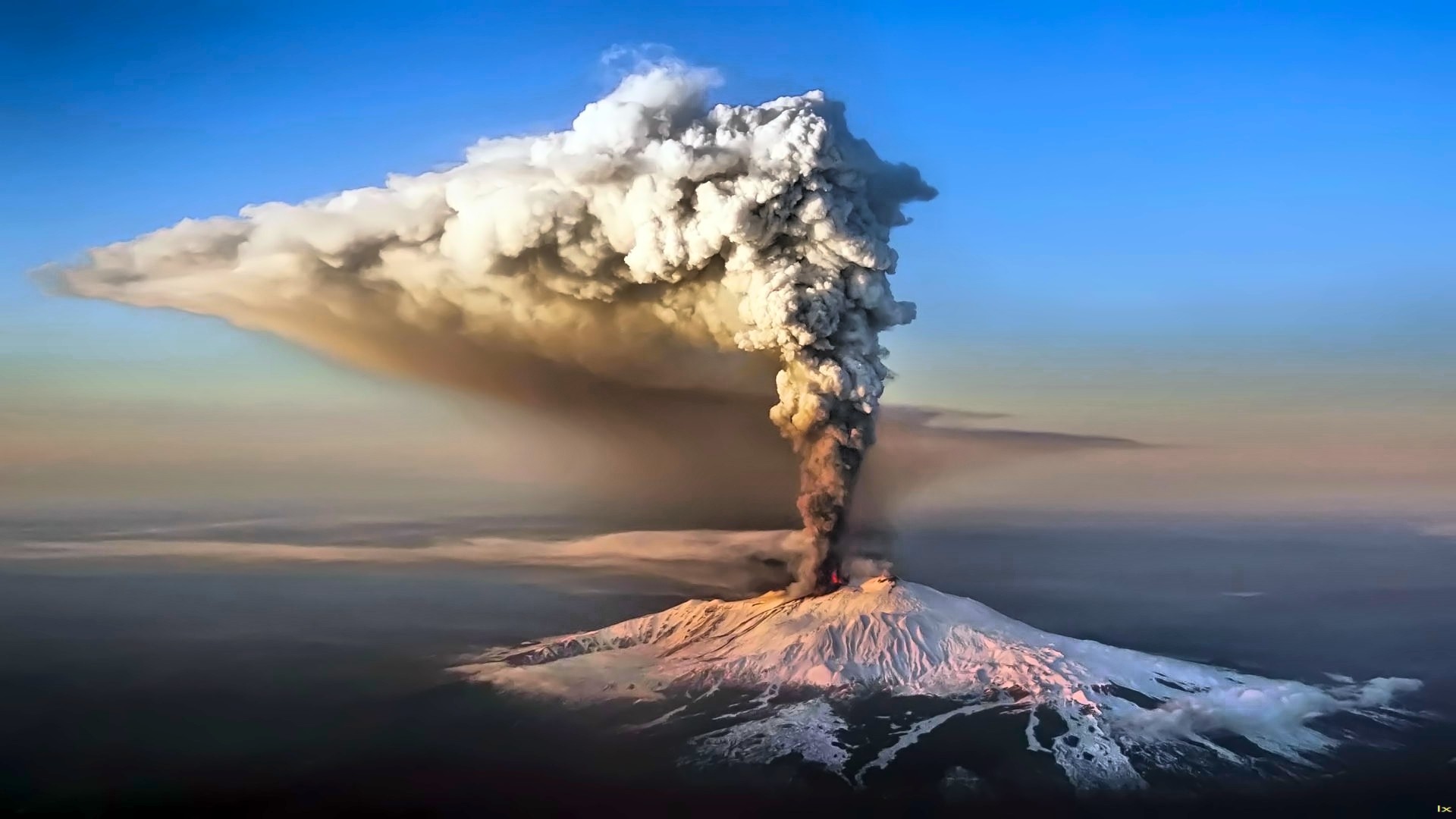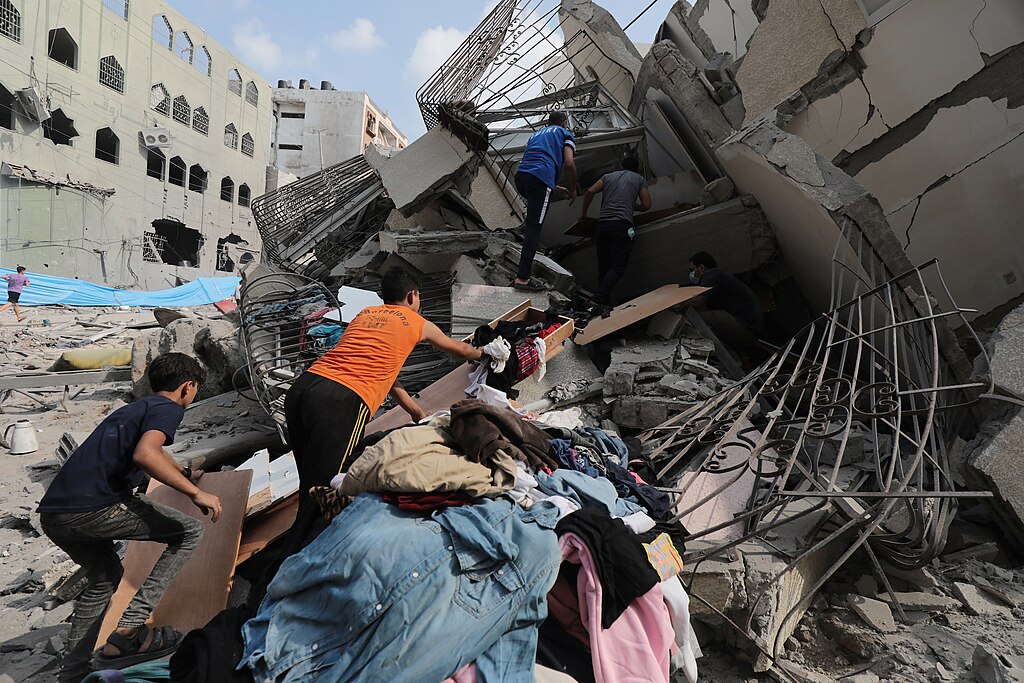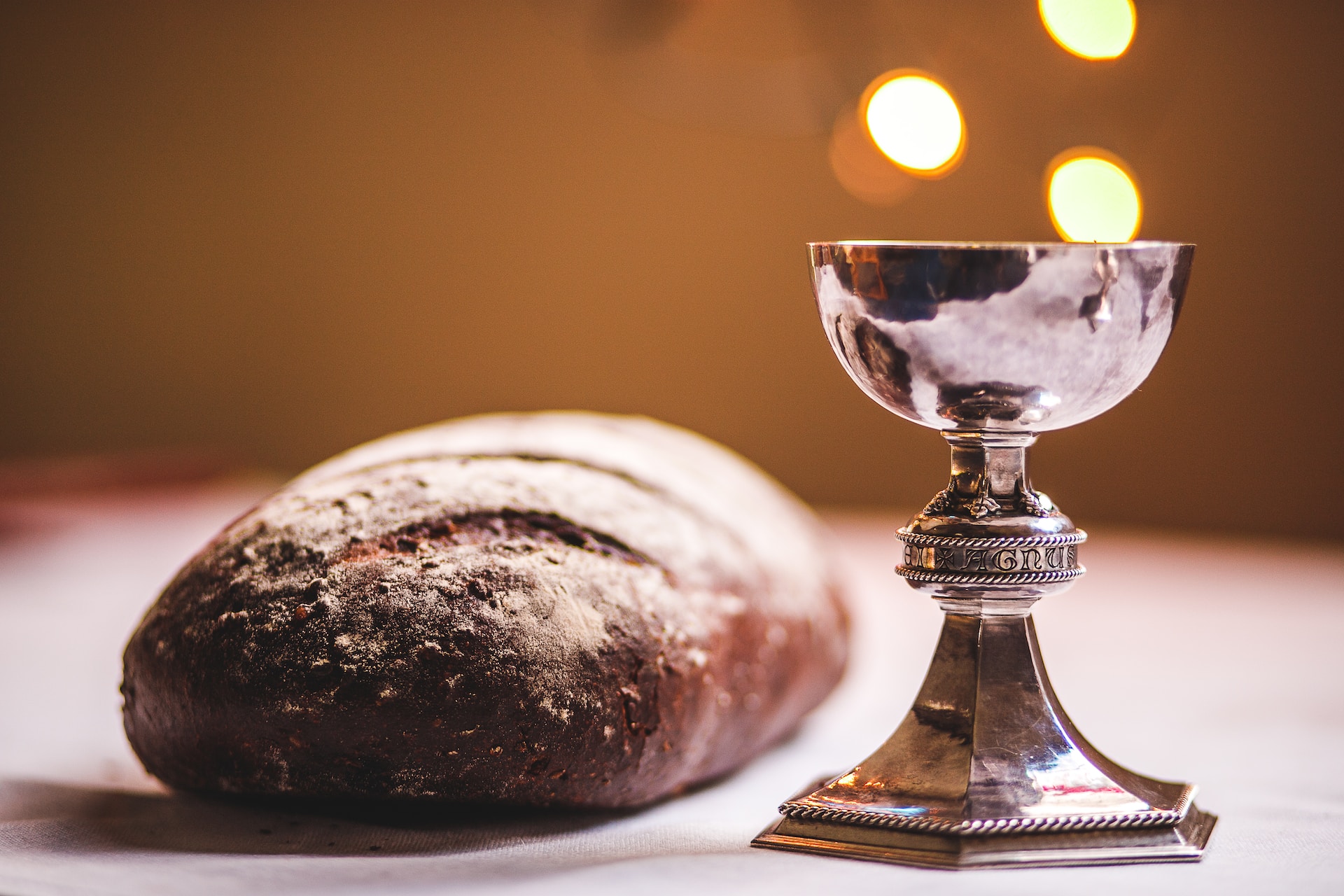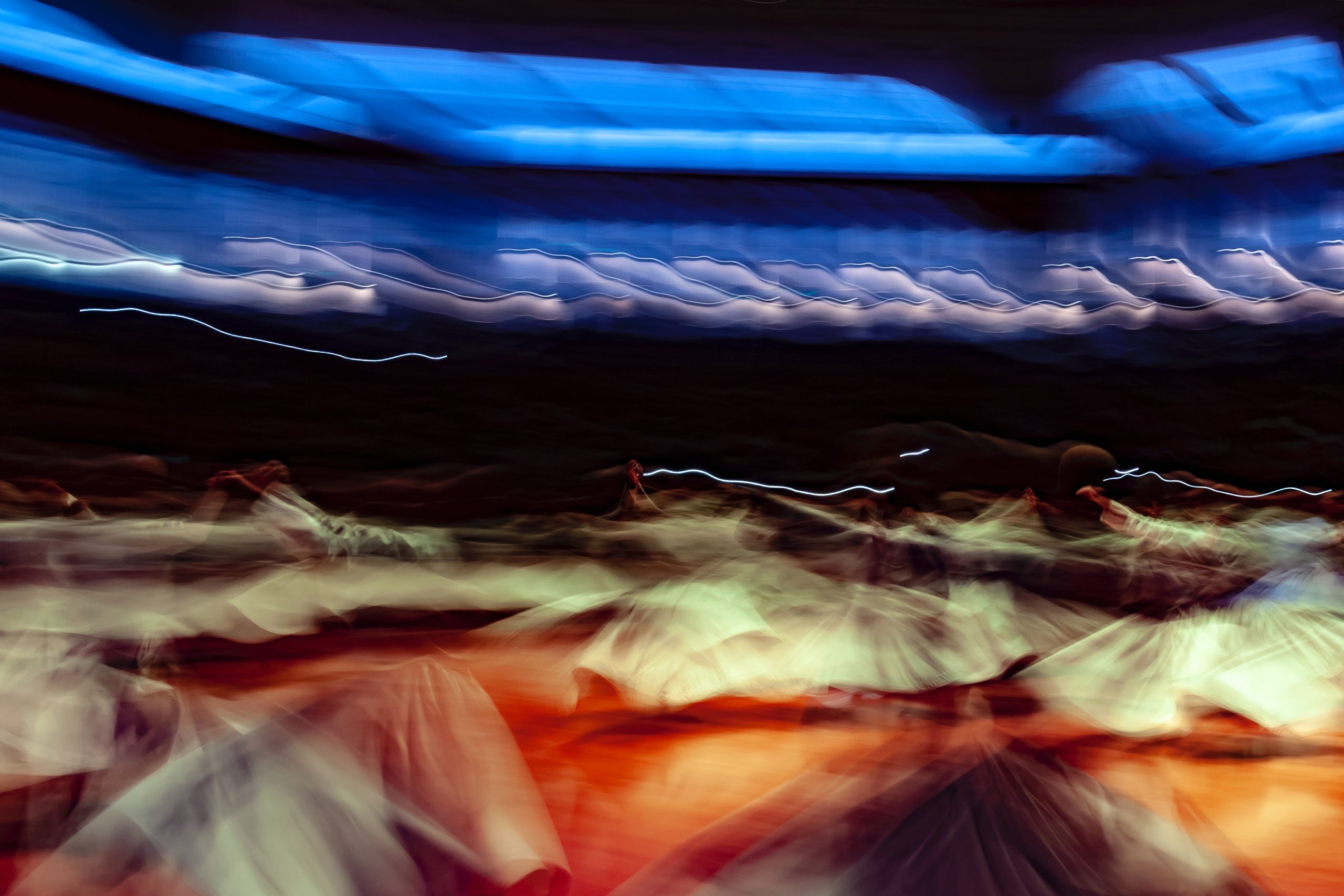Purposeful Memoir as a Path to Alignment
Purposeful Memoir as a Path to Alignment
by Jennifer Browdy
Most people think of memoir as a recounting of what we already know about our lives. But, in fact, what we already know is only the beginning of the journey of what I call purposeful memoir, particularly when we’re looking to align the personal, political, and planetary in our life experience—meaning, to understand how our personal choices are shaped by, and affect, both the social and environmental landscapes in which we live.
This profound interconnection is expressed by the Buddhist concept of interbeing. We inter-are with everything else on the planet. The Western attitude of individualism, separatism, and exceptionalism is an illusion bred by the arrogant thinkers of the so-called Enlightenment, which was in fact the beginning of a 500-year period of gathering darkness, leading us to the crisis moment we face today.
We have all, inescapably, been part of the political and planetary patterns of our lifetimes. To take my own life as an example, I was born in New York City in 1962, the year Rachel Carson’s Silent Spring was published, just after the Cuban Missile Crisis, and just before the assassinations of John F. Kennedy, Malcolm X, Bobby Kennedy, and Martin Luther King, Jr. I was too young to understand the tumult around me in my early years, and, yet, these political and planetary happenings shaped who I would become.
On the personal level, I knew that as a child, in what I call ‘Earth’ years up to age 12, I loved spending time out in the woods and fields around my family’s country home. What I had forgotten- and remembered in the course of writing my memoir- was how that dreamy love of communion with nature had been socialized out of me by my teenaged desire to fit in with my peers, and by my formal education.
Once I wrote my way back to that understanding, I found the purpose of my memoir: describing how my own lack of alignment with the natural world I adored was mirrored exponentially, like a creepy funhouse, by the alienation from nature of the dominant society around me.
Writing my memoir was a process of unlearning what I’d been taught in what I call the ‘Water’ years of life: the teenage and young adult years when we humans tend to want to go with the flow of the society around us, seeking approval in conformity. I was catapulted into this exploration by the challenges I met in the ‘Fire’ years of my adulthood: on the personal level, divorce and career troubles; on the political level, frustration with a relentless politics of domination and destruction; and on the planetary level, waking up- horrified- to the unfolding crises of climate and ecological devastation.
Purposeful memoir that aligns the personal, political, and planetary is a tool for deeper understanding of how we got where we are today, as individuals, as a society, and as an interconnected global system.
It is also visionary: we explore the past and present in order to be able to more clearly and boldly imagine the future into which we want to live.
We look backward over our lives in order to see clearly the values and dominant narratives that have structured our relationships and guided our assumptions about what was possible. We soberly assess how we contributed to a present moment that is undeniably in crisis on the political and planetary levels. And then—in a glorious leap—we envision how we can make our own lives a strong link in the chain between past and future generations.
In purposefully following the trail of our own life experience, we follow a kind of Ariadne’s thread back out of the dark labyrinth of the present moment. It helps to have company on the journey, which is why I ended my memoir with a vision of “doing hope with others”—working together in circles of other people who have awakened to the necessity of aligning the personal, political, and planetary in the quest for a thriving future.
Writing this kind of memoir is a slow, grounded form of activism, and I believe it’s just as important as marching and shouting and signing petitions. The more of us who take the time to do the deep work of understanding our own life histories and how our individual lives have intertwined with the larger human and non-human communities on the planet, the stronger we will stand, together, as Gaian warriors who fight for Life.
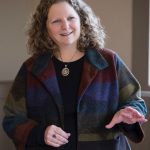
About Jennifer Browdy
Jennifer Browdy, Ph.D. is a professor of comparative literature and media studies at Bard College at Simon’s Rock, where she has taught for more than 20 years. Her new memoir, What I Forgot …And Why I Remembered, is accompanied by her writer’s guide, The Elemental Journey of Purposeful Memoir, a 2017 Nautilus Award Winner. The author of many articles and book chapters, she is the editor of three anthologies of global women’s writing, as well as the online magazine Fired Up! Creative Expression for Challenging Times. Along with her online course, The Elemental Journey of Purposeful Memoir, Jennifer offers workshops in purposeful memoir internationally, as well as author-coaching, editing, and manuscript review. She writes two blogs: Transition Times, on social and environmental justice; and Writing Life, on the art and craft of purposeful memoir. Find out more at JenniferBrowdy.com.
Healing Into Consciousness
Healing Into Consciousness
Witnessing the birth of my grandchild, I was humbled in a very profound way. Looking into her eyes was like having a glimpse into the eyes of the unknown. I wondered where this newly-born child’s soul had been traveling, how her life would unfold, what her trials and tribulations on this planet would be, and what kind of gifts she brought into this world to share.
Every child is born a blank slate. No matter how loving, caring, and conscious the child’s parents are, they cannot predict what their child’s experiences will be, what lessons he/she is here to learn, and what kind of beliefs the soul will adopt from her personal experiences and social conditionings. Like the very fabric of the Universe, our human existence is complex and multidimensional. The exploration of our human condition and the discovery of our true nature is a mysterious and sophisticated journey. As we become conscious of one aspect of our existence, another is revealed to us. We are led into the arms of the unknown over and over again to discover truths about ourselves, others, and the Universe.
As humans, we have been gifted with an ability to question, explore, and discover the Truth of who we are. Though not an easy path, the longing to awaken to our True Self is built into the core of our being. Discovering the ultimate health that resides in our being is each person’s destiny, no matter how much they stray from the path of self-discovery.
I was five years old when I saw my grandfather die after battling cancer. He was in pain and very frustrated. He finally decided it was enough and grabbed a bottle of morphine that was used to ease his pain and drank from it. Shortly after, he died and everything became calm and peaceful.
Watching his lifeless body, I remember thinking that I will die one day, too. The world will continue going, just as it did after my grandfather’s death. I was suddenly taken into a different dimension of reality where I had a bird’s eye view of the impermanence of life. I knew, in that moment, that the most important things for me while I was on this planet would be to discover who I am, where I came from, and where would I go when I die.
Like everyone else, I ‘forgot’ about this important insight as life took me on its spin. Like all of us, I was inundated with conflicting ideas, beliefs, and conditionings and began to identify with them. I accumulated ideas from my parents, personal life experiences, and those that were imposed on me by social and religious structures. By the time I attained two university degrees (education and architecture), I had forgotten about the awareness of what I thought was the most important thing in life. Something inside me kept feeling misplaced, however. I did not want to fit into the structure that my parents and the world expected of me.
Fortunately, no matter how much we stray from our own path, our inner light never can be lost. Sooner or later, we will all revert back to the Truth that is undeniably at the core of our being.
After going in a roundabout way through many hardships, heartaches, and disappointments, I recognized the falsity that was all around me. I began to internally rebel and longed to find my lost inner peace and authentic Self.
I was 24 years old when I was first introduced to the teachings of George Gurdjieff and Osho. Immediately, they resonated with me and I knew that I was back on track. What they called enlightenment was the path to finding my True Self. So, I left behind what the world considered valuable in terms of a career, material success, and prestige, and, with great passion, focused on meditating and looking inward.
Things gradually began to crystalize as I embarked on this uphill path of self-discovery, which essentially meant unlearning everything that I had learned and with which I was conditioned. After several profound experiences through meditation and introspection, I experienced firsthand what dis-identifying from the body, mind, and emotions truly meant. I saw the partnership between my mind and my ego mutually feeding on all the beliefs and conditionings to stay alive.
My curiosity to explore the workings of my ego-mind and observe them as a scientist of my own inner world helped me understand the ego’s fear to die and disappear into the unknown. When I gathered courage to face the fear and passed through the hurricane into its eye, I was left within the simple existence of my being which felt like an “am-ness” without anything written on it. I saw that this am-ness—which also can be called presence—was at the center of everything in the universe, including humans, trees, rocks, oceans, stars, planets, and even things.
Reconnecting to this place of absolute stillness is not an easy task. In order to find and live from this place of innocence and Pure Being, we must unlearn what we have learned. We must peel away the many layers of adopted beliefs and conditionings. We must transform what is false in us and all the games that our ego plays in order to survive. We must understand that awakening can only happen by with integrity and purity of heart.
Beliefs never lead us to self-discovery. Beliefs keep us ignorant of the universal truth of who we truly are. They keep our energy and consciousness imprisoned in anxiety and false fears about survival.
The easiest way to begin the process of unlearning is first to explore:
What are your beliefs and conditionings; how were they formed; and how can you transform them into consciousness so you can fully live your life and contribute your unique gifts to the world?
Answers to these questions cannot be found with the mind or energy work. Just like a computer program, the mind actually is the generator of the beliefs and cannot see or dis-identify from itself. Only consciousness, which is an integral part of the being, can recognize itself and see what is eternal and indestructible and what is impermanent and finite.
Having worked with thousands of people over the past 25 years, I have discovered a fundamentally new way that helps people access and transform their beliefs (which are not just in the brain but in the entire body) without using the mind. Each person can use this self-healing and self-discovery system on their own, to become self-empowered, to discover what is true and false within them, and to heal into consciousness.
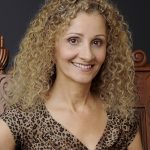
About Mada Dalian
Mada Eliza Dalian is a spiritual teacher, creator of the self-help Dalian Method for adults, teens, and children, and a master trainer of Dalian Method Facilitators and New Paradigm Leaders. She is the award-winning author of In Search of the Miraculous: Healing into Consciousness and Healing the Body & Awakening Consciousness with the Dalian Method: A Self-Healing System, for a New Humanity (book and 2 CD set). For more information, visit www.MadaDalian.com.
Roots and Evolution of Mindfulness
Roots and Evolution of Mindfulness
Before reading this article, listen to a spoken introduction with Joel and Michelle Levey.
When we first began our study, practice, and research of mindfulness in the early 70s, we knew fewer than a handful of people who were involved in this path of practice. As our practice and research matured, we began to develop mindfulness-based programs in medicine, higher education, and business. In the mid-70s and early 80s, we knew of no one else bringing these methods into the mainstream. Gradually over the years, a groundswell of insight, interest, and research has emerged, creating a host of benefits and challenges, clarity and confusion, that inspires and confounds the modern mindfulness movement.
Our intent in composing this brief article is to offer an overview of some key perspectives on mindfulness. For people relatively new to mindfulness, it’s helpful to have a clearer understanding of its roots, shoots, and trends in order to access the deeper meaning, purpose, and value of this vital practice.
To the degree to which we wake up with mindfulness and learn to open our hearts and minds, the walls of our conventional, familiar, consensus view of reality become more clear, open, and transparent, revealing a deeper, vaster, multidimensional, and interrelated view of the actual nature of reality than we have previously imagined. This is why what we call mindfulness meditation is traditionally known as Vipassana, or ‘Insight Meditation.’ Mindfulness gives us access to insight and the direct, non-conceptual intuitive wisdom that liberates us from our misconceptions regarding the nature of reality and the true nature of ourselves.
You Reading This, Be Ready
by William Stafford
Starting here, what do you want to remember?
How sunlight creeps along a shining floor?
What scent of old wood hovers, what softened
sound from outside fills the air?
Will you ever bring a better gift for the world
than the breathing respect that you carry
wherever you go right now? Are you waiting
for time to show you some better thoughts?
When you turn around, starting here, lift this
new glimpse that you found; carry into evening
all that you want from this day. This interval you spent
reading or hearing this, keep it for life—
What can anyone give you greater than now,
starting here, right in this room, when you turn around?
While mindfulness is certainly widely adopted and practiced, our experience is that surprisingly few people are aware of its deep roots and origins in wisdom traditions—its more profound meanings, value, highest implications, and most intriguing applications. Our intent here is to offer insight, inspiration, and illumination on these facets of the jewel of mindfulness as it shines out in our modern times.
Roots of Mindfulness
Mindfulness as a technical term has its historical origins in the ancient Pali word sati used by the Buddha in his teaching on mindfulness over 2600 years ago. Sati literally translates as “memory”- as in remembering what you are paying attention to in the present moment of awareness. In an attempt to meaningfully translate treasured Buddhist meditation manuals, the English translator Rhys Davids was the first to offer an English translation using “mindfulness” in 1881, and, by 1910, mindfulness had become the generally accepted norm. Davids was inspired to use the term “mindfulness” by its use in an Anglican prayer that says, “Always be mindful of the needs of others.” Interestingly, from this initial choice to translate sati as mindfulness, there is an implication that mindfulness is also akin to a newly emerging meme of kindfulness which reminds us that we pay attention to what we care about. The widespread use of the term ‘mindfulness’ has endured to this day where we find the meaning of mindfulness continuing to be adapted, as it is incorporated into common use with an ever expanding variety of mindfulness-based interventions (MBIs) that are emerging within health science, corporate, and high-performance arenas of contemporary culture.
Unfortunately, the meaning of the term mindfulness also is becoming increasingly misconstrued through its association with deep relaxation without mindful awareness, creative imagination visualizations, getting a good night’s rest, ‘mindfulness chairs,’ mindful men’s clothing, or even mindful mayonnaise—all of which have little or nothing to do with the meditative practice of mindfulness. Some respected teachers in the realm of mindfulness have gone so far as to say that the word ‘mindfulness’ has all but lost its original meaning.
Roots of the Modern Mindfulness Revolution
While the teachings of mindfulness practice have endured for millennia since the time of the Buddha, the contemporary “mindfulness revolution” was propelled into modern times by the colonial thrust of the British Imperial Army invading and conquering the Buddhist kingdom of Burma in November 1885.
For centuries the Burmese people regarded their king as ‘the protector of the Dhamma‘- the liberating teachings of the Buddha which, when taken to heart, have the power to free us of our delusions and confusions by opening our wisdom eyes to directly discern things as they truly are. Mindfulness is the primary practice of these liberating teachings, and its power lies in quieting the conceptual dualistic overlay of thoughts to allow direct insight into the true nature of reality to arise clearly in the mind.

As the Brits marched into the capital city of Mandalay, the Burmese people looked on in horror as their beloved king and his family, surrounded by British soldiers brandishing rifles, were taken from the royal palace and unceremoniously loaded in an oxcart that carried them to a waiting steamship that would carry them into exile. The royal palace was then transformed into an officers’ club for drinking, dancing, and socializing!
A profound wave of concern rippled through Burmese society giving rise to an unprecedented cultural revolution that activated the Burmese people to protect the precious and vulnerable teachings of the Dhamma. Foremost among these cherished teachings was the practice of mindfulness.
Up to this time in Burma and throughout Southeast Asia, the teachings and practice of mindfulness had been mostly held within the monastic community of ordained monks and nuns, while the religious practices of the lay community focused primarily on generosity and giving of alms to generate spiritual merit, with the assumption that lay people were unlikely to actually realize enlightenment through practicing meditation.
With the advent of the British invasion and the king’s exile, visionary teachers within the monastic community, lead by the monk Ledi Sayadaw, and the householder Saya Thetgyi spread the practices of the Vipassana tradition, from which mindfulness is derived, throughout secular society. In the decades that followed, a contemplative cultural revolution spread throughout Southeast Asia giving rise to a renaissance and wide diffusion of mindfulness teachings with both the monastic and lay communities. (Braun, 2014)
Three Main Streams of Mindfulness Practice
The next wave of mindfulness revolutionaries appeared as droves of globe trotting spiritual seekers, peace core volunteers, government spooks, and mind scientists who traveled to Asia in the 1960s and 70s intent on seeking out enlightening teachers, wisdom teachings, and liberating contemplative technologies. Word of inspiring teachers and meditation retreats quickly spread through the social networks of those times drawing early waves of contemplative pilgrims to the monasteries and meditation centers of Southeast Asia to get their first immersive and transformative experiences of intensive mindfulness meditation practices, which were often presented in 10 day silent retreat formats or longer even more intensive retreats.
Through the influence of many of these early adopters of mindfulness, three principle streams of mindfulness practice have flowed into modern Western culture.
Insight Meditation: One stream of mindfulness practice came to the West through the teachings of Mahasi Sayadaw, U Pandita, Ajahn Chah, Buddhadāsa Bhikkhu, and other Thai and Burmese teachers of the “forest monastery” tradition which emphasized a blend of mindful breathing, noting and noticing of the nuances of momentary changing experiences, mindful walking, mindful eating, integrating mindful awareness into every activity, and resting in open clear awareness without grasping at any momentary experience. This lineage of mindfulness practice is widely referred to as “Insight Meditation” and was introduced to the West primarily through the influence of Jack Kornfield, Sharon Salzberg, and Joseph Goldstein who co-founded the Insight Meditation Society in Barre, Massachusetts in 1975. Kornfield later also co-founded the Spirit Rock in Marin, California in 1988 with a number of other teachers.
The wise and creative teachings offered at these two centers alone have inspired tens of thousands of people over the past 40+ years, giving rise to hundreds of other practice centers around the globe, and playing a significant role in inspiring the global diffusion of mindfulness practice into higher education, medicine, business, military, government, sports, and other arenas of modern life. Within this stream many other respected teachers, including Anagarika Munindra, Dipama, Ajahn Amaro, Ajahn Sumedho, Thannasaro Bhikkhu, Taungpulu Sayadaw, and Dr. Rina Sircar, to name but a few, have deeply inspired the diffusion of mindfulness teachings throughout North America, UK, and Europe.
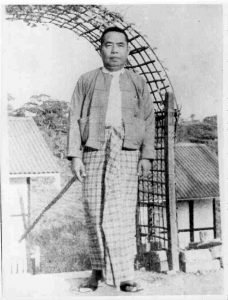
Vedana Vipassana: The second stream came to the West from the Burmese teacher U Ba Khin, the Accountant General of Burma, who founded the International Meditation Society in Rangoon in 1952 where he attracted the attention of many international students and teachers. As a lay practitioner and respected lineage holder from Saya Thetgyi of the vedana vipassana tradition of mindfulness practice, and also a respected accountant, U Ba Khin accepted the invitation from the Burmese government to assume the role of Accountant General and to assume leadership in order to route out the corruption in the Burmese Treasury Department. U Ba Khin accepted this appointment with two conditions. First was that one wing of the Treasury Department would be transformed into a meditation hall where members of his staff could come and meditate at any time. Second, was that everyone on his staff in the Treasury Department would train with him and participate in at least one intensive ten-day silent Vipassana style mindfulness retreat. As U Ba Khin said, “I refuse to work with incompetence.”
U Ba Khin’s style of mindfulness practice focused on developing concentration through single-pointed concentration on the breath, and then the close application of mindfulness by scanning or “sweeping” mindful awareness slowly through the body from the top of the head to the toes, over and over again, for up to 20 hours per day, leading to a profound state of vivid mental clarity and the purification of embedded congestion within the gross and subtle body. In this austere and intensive style of practice there is only sitting meditation, with no mindful walking, yoga, mindful eating or other practices at all.
In his later life, U Ba Khin passed his legacy of teachings on to seven teachers including S.N. Goenka (a Burmese businessman who is widely known in the West), Robert Hover (a former U.S. aeronautical engineer), Ruth Denison (a German pioneer in embodied movement practices), and John Coleman (a former British MI6 agent), all of whom carried these liberating teachings back to North America and Europe and around the globe. In particular, Goenka’s approach to teaching mindfulness has become very popular and widely available in the West and around the world, especially as the teachings and retreats are offered free of charge. After retreats, the students are encouraged to make donations and “play it forward” to freely fund retreats for future students.
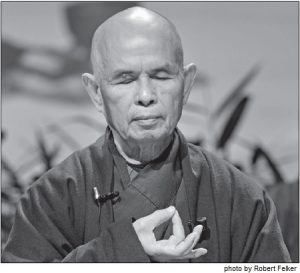
The Order of Interbeing: A third stream of mindfulness teachings came to the West in part due to the U.S. invasion of Vietnam, where the monk Thích Nhất Hạnh and his community were practicing and teaching mindfulness as an integral practice in their non-violent peace work amidst the terrors of the war. As the war raged on and many of his colleagues were brutally murdered, Thay, as his students call him, took refuge in France where he founded the Plum Village international Meditation Center and the Order of Interbeing. There, he continued to teach his unique and highly accessible form of mindfulness which emphasizes the practice of mindful breathing, mindful walking, and the repetition of meditation phrases or gathas, synchronized with inhalation and exhalation. To develop deeper ease and continuity of meditation, words such as calming, smiling and arriving are used to help relax and focus the mind and quell the tendency toward discursive thoughts during meditation practice. Today there are hundreds of centers around the globe teaching Thay’s style of mindfulness practice.
One of Thay’s gifts is his encouragement to bring a gentle, heartfelt, compassionate inner smile to mindfulness practice,—“smiling to our sorrow”—in order to realize that “we are more than our sorrow.” This practice of gentle smiling has influenced mindfulness instruction and how it is often introduced and practiced in the West. Most importantly, his teachings on interbeing—the interconnection of all Life—and the illusion of a ‘separate self’ are fundamental for those who follow this teacher.
Beyond these three primary streams, there are other streams, lineages, and teachers who emphasize a variety of aspects or approaches to the practice, and there are also many teachers and centers that weave together teachings and practices drawn from these different traditions.
Kindfulness | Mindfulness Blossoms As Compassion and Lovingkindness
Being present with kindness and compassion
is being mindful.
– Jon Kabat Zinn
As the practice of mindfulness deepens and matures, it embraces and is responsive to the needs, not only of ourselves, but of all beings who suffer and experience vulnerability or injustice in their lives, society, and world. As many of the foremost Western mindfulness teachers have matured in their practice, the nature and tone of their teachings have warmed, shifting from a more austere focus on “bare attention” and taking on a more compassionate tone that encourages their students to blend mindful awareness with a merciful, warm hearted approach to their mindfulness practice.
It is becoming increasingly more common for mindfulness teachers to expand their studies and practice of mindfulness to draw inspiration from traditions that give greater emphasis to heartfelt qualities such as gratitude, genuine friendliness, compassion, lovingkindness, self-compassion, and engaged social justice action, into mindfulness education and training. This heartwarming, compassionate impulse may be integrated into mindfulness practice simply as a gentle, merciful, inner smile as one musters the courage to look within and mindfully, whole-heartedly embrace the tension, apprehension, sadness or rage found there. Or it may be intentionally cultivated as a robust practice of meditation such as lovingkindness—or metta—wishing well to ourselves, others, and all beings; or generating radiant compassion regarding and embracing the presence of suffering in our lives, relationships, and world; or activating an explicit dedication to practicing mindfulness with an intention of realizing one’s true nature and highest potentials for the benefit of all beings.
As mindfulness matures into kindfulness (Braum, A. 2016), on a societal level, we are witnessing the emergence of more university programs that explicitly include compassion science and encourage compassion-based practices as part of their curriculums. Among the most respected programs in today’s world are:
Stanford University’s CCARE Program- Center for Compassion and Altruism Research and Education http://ccare.stanford.edu);
Mindful Self Compassion- self-compassion.org/the-program/
The Greater Good Science Center- connected with Stanford and UC Berkeley http://greatergood.berkeley.edu
University of Wisconsin’s Center for Healthy Minds- (http://www.investigatinghealthyminds.org/cihmDrDavidson.html);
Mind and Life Institute- https://www.mindandlife.org/
Max Planck Institute’s Human Cognitive and Brain Science- ReSource Program (https://www.resource-project.org/en/home.html )
Mindfulness, Collective Intuitive Wisdom, & Human Flourishing
The world we have made as a result of the level of the thinking we have done thus far creates problems that we cannot solve at the same level of thinking (i.e. consciousness) at which we have created them… We shall require a substantially new manner of thinking if humankind is to survive. – Albert Einstein
Could it be that the global surge of interest in mindfulness is an evolutionary impulse perfectly responsive to the challenges of these times? From our many years of practice, research, and work bringing mindfulness to organizations and communities around the globe, it seems that the greatest value and most highly leveraged application of mindfulness may be to follow Einstein’s advice. How? By equipping individuals and innovation teams with the skills necessary to refine the level of their personal and collective consciousness in order to access the deeper intuitive wisdom necessary to bring forth breakthrough solutions to complex global problems.
As the key to accessing the most-subtle dimensions of intuitive wisdom, the greatest value of mindfulness in this age may be in its capacity to liberate us from our collective ignorance by opening our minds to the wisdom we need to flourish together in this beautiful and fragile world.
One of our most cherished visions and aspirations is to develop cohorts of altruistically motivated, sincere and disciplined individuals and teams, intent on employing mindfulness for accessing or “sourcing” insight from deeper, subtler strata of personal and collective intuitive wisdom. This is in order to bring forth the insights and innovations necessary to resolve the dire challenges of these treacherous times, while promoting human flourishing and thriving for generations to come. (Levey, J. and Levey, M. 2008)
Mainstreaming Mindfulness: Encouraging Trends
In our work and travels with hundreds of leading medical centers, universities, organizations, and governmental groups around the globe over the past 40+ years we are heartened to see an ever widening diffusion of mindfulness teachings. Here are some of the most inspiring examples we have seen:
- Contemplative Science: The rapidly emerging field of contemplative science brings together the best of technology, neuroscience, and inner technology inspired by the wealth of the world’s wisdom traditions giving rise to innovative programs and research in hundreds of universities and respected institutes around the globe. Mind and Life Institute’s International Symposiums on Contemplative Studies have brought together thousands of people from around the world to share their research on mindfulness and many other contemplative practices. (https://www.imconsortium.org)
- Leadership and Contemplative Science: While a myriad of leadership developments are being offered in our world today, few have seriously addressed the development of moral, ethical, and contemplative capacities of leaders. One of the most relevant and inspiring initiatives we have seen in this regard is the Mind and Life Institute’s Academy for Contemplative and Ethical Leadership (ACEL) that we were fortunate to help birth. (https://www.mindandlife.org/legacy-programs/acel/ )The ACEL charter states,
- Mindful Law: Nearly a decade ago Rhonda McGee took a bold step to introduce the first course on Mindfulness in Law class at Berkeley Law School. Since then, 40+ law schools have followed her lead with programs on Mindfulness and Contemplative Lawyering as essential skills for professionals in the judicial system.
- Mindfulness in Medicine: Mindfulness is an essential element of the core curriculum within the 70+ medical schools that participate in the Consortium of Academic Health Centers for Integrative Medicine.https://www.imconsortium.org
- Mindfulness in Government: In recent years, British Parliament’s Mindfulness Roundtable which involved over 120 MPs and Lords from different parties of the government who have trained in mindfulness, gave rise to the development of the Mindfulness Initiative and the Mindful Nation UK Report which encourages the integration of mindfulness in four domains of British society: health care, education, criminal justice, and the workplace. (The Mindfulness Initiative: Mindful Nation UK Report. 2015)
- Wisdom 2.0: Since its inception in 2010, the Wisdom 2.0 conferences have brought together thousands of organizational leaders and consultants from around the planet interested in the interphase of mindfulness, meditation, yoga, leadership, innovation, organizational health and performance, social justice, quality of life, and bottom-line business results. With leaders and presenters from Google, Ford, Facebook, Twitter, LinkedIn, PayPal, Zappos, AETNA, Blackrock, Burning Man, Slack, British Parliament, U.S. Congress, and many other leading organizations to explore the many wise and helpful ways that mindfulness and related practices is delivering measurable value in our lives and world of work. (http://wisdom2conference.com/About)
- Mindful Social and Emotional Learning (SEL): With an ever increasing wealth of affirming data, robust programs are integrating mindfulness with social and emotional learning into a wide array of primary and early childhood development learning programs around the globe.
For a monthly update of compelling research on mindfulness and mindfulness based practices visit: http://GoAMRA.org
These are just a sampling of the significant and inspiring trends that we are seeing in the diffusion of mindfulness into the mainstream mindstream of our world.
References
American Mindfulness Research Association, http://GoAMRA.org
Bodhi, B. 2016. The Transformations of Mindfulness. Published in Handbook of Mindfulness: Culture, Context, and Social Engagement (Mindfulness in Behavioral Health). Edited by Ronald E. Purser, David Forbes and Adam Burke. Springer International Publishing, Switzerland, 2016 https://books.google.com/books?id=nBFVDQAAQBAJ&pg=PA3&lpg=PA3&dq=The+Transformations+of+Mindfulness.+Published+in+Handbook+of+Mindfulness:+Culture,+Context,+and+Social+Engagement+(Mindfulness+in+Behavioral+Health).+Edited+by+Ronald+E.+Purser,+David+Forbes+and+Adam+Burke.+Springer+International+Publishing,+Switzerland,+2016&source=bl&ots=Yh334UtV40&sig=HA4UeflyHZbsU9OCjYGTMouD1LI&hl=en&sa=X&ved=0ahUKEwiZ1vqN3e_ZAhUB24MKHW_dB98Q6AEILzAC#v=onepage&q=The%20Transformations%20of%20Mindfulness.%20Published%20in%20Handbook%20of%20Mindfulness%3A%20Culture%2C%20Context%2C%20and%20Social%20Engagement%20(Mindfulness%20in%20Behavioral%20Health).%20Edited%20by%20Ronald%20E.%20Purser%2C%20David%20Forbes%20and%20Adam%20Burke.%20Springer%20International%20Publishing%2C%20Switzerland%2C%202016&f=false
Bhikkhu, T. 2012. Right Mindfulness.
http://www.accesstoinsight.org/lib/authors/thanissaro/rightmindfulness.pdf
Braum, A. 2016. Kindfulness. Wisdom Publications.
Braun, E., Spring 2014. “Meditation En Masse: How Colonialism Sparked the Global Vipassana Movement” Tricycle. http://www.tricycle.com/feature/meditation-en-masse
Clarke T. C., et al. 2015. “Trends in the Use of Complementary Health Approaches Among Adults: United States, 2002–2012,” National Health Statistics, No. 79, Hyattsville, MD, National Center for Health Statistics, 2015; “Uses of Complementary Health Approaches in the U.S.,” National Center for Complementary and Integrative Health.
Consortium of Academic Health Centers for Integrative Medicine. https://www.imconsortium.org
Gyatso, T. the Dalai Lama. 2001. Dzogchen: The Heart Essence of the Great Perfection. Snow Lion Publications.
https://books.google.com/books?id=4HqLxJRN6MUC&pg=PA254&lpg=PA254&dq=%22dalai+lama%22+Dzogchen+London&source=bl&ots=uKMkzDoubE&sig=j0UcaRAuBVMBTXSju5kDod–hzo&hl=en&sa=X&ved=0ahUKEwizhNa_w5HWAhVBwWMKHQBKA1MQ6AEITDAG#v=onepage&q=%22dalai%20lama%22%20Dzogchen%20London&f=false
Kotler, S. and Wheal, J,. 2016. Stealing Fire: How Silicon Valley, the Navy SEALs, and Maverick Scientists Are Revolutionizing the Way We Live and Work. HarperCollins.
Levey, J. and Levey, M. 2015. Living in Balance: A Mindful Guide for Thriving in a Complex World. Divine Arts. https://divineartsmedia.com/products/living-in-balance-a-mindful-guide-for-thriving-in-a-complex-world
Levey, J. and Levey, M. 2008. Mind Treasure. Intuition at Work. Sterling Stone Publishers.
Mind and Life Institute ACEL (Academy for Contemplative and Ethical Leadership). 2015. https://www.mindandlife.org/legacy-programs/acel/
Mind and Life Institute—Contemplative Science Symposiums. https://www.mindandlife.org/international-symposium-for-contemplative-research/
The Mindfulness Initiative: Mindful Nation UK Report. 2015. http://www.themindfulnessinitiative.org.uk/publications/mindful-nation-uk-report and http://www.themindfulnessinitiative.org.uk
Mingyur, Y. Rinpoche, and Tworkov, H. 2014. Turning Confusion into Clarity: A Guide to the Foundation Practices of Tibetan Buddhism (Boston: Snow Lion, 2014).
National Business Group on Health and Fidelity, July 14, 2016. Corporate Mindfulness Programs Grow in Popularity.
Pinsker, J. March 10, 2015. Corporations’ Newest Productivity Hack: Meditation. Atlantic.
Purser, R., Milillo, J. 12 May 2014. Mindfulness Revisited: A Buddhist Based Conceptualization. Journal of Management Inquiry. https://www.academia.edu/8102895/Mindfulness_Revisited_A_Buddhist-Based_Conceptualization
Purser, R., Ng, E., & Walsh, Z. (2018). The promise and perils of corporate mindfulness. In Chris Mabey and David Knights (Eds.), Leadership Matters: Finding Voice, Connection and Meaning in the 21st Century (pp. 47-63). New York, NY: Routledge.
Thubten, A. 2012. The Magic of Awareness. https://books.google.com/books?id=tJofqSlqmsYC&printsec=frontcover&dq=Anam+Thubten+Thubten+magic+of+awareness&hl=en&sa=X&ved=0ahUKEwjpl5bixJHWAhVD1WMKHb7EAYwQ6AEIKDAA#v=onepage&q=Anam%20Thubten%20Thubten%20magic%20of%20awareness&f=false
Wieczner, J. March 12, 2016. Meditation Has Become a Billion-Dollar Business. Fortune.
Wisdom 2.0, http://wisdom2conference.com/About
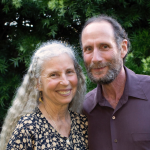
About Joel and Michelle Levey
Dr. Joel and Michelle Levey, founders of Wisdom at Work, are regarded as leaders and early pioneers in the global “mindfulness revolution,” the “contemplative science,” and the “collective wisdom” movements. Their inspired wisdom at work demonstrates the profound sensibility of integrating contemplative science, interpersonal neurobiology, and contemporary mind-fitness training for developing the extraordinary capacities of leaders, teams, and organizations in these complex modern times. Learn more here.
Presence at the Edge of Our Practice
Presence at the Edge of Our Practice
Humanity is in a time of transition, one that we can navigate successfully only with a shift in consciousness. How can we wake up from the collective neuroses that have driven our civilization into decadence and decline? How do we recover from the addictions that hold us in their thrall? In this article, I propose the perspective of practice as a pathway to liberation from destructive and reductive habits that is accessible to all and offer a preliminary overview of human practices for the 21st century.
One of the most potent invocations ever uttered by humans has to be the famous Chinese curse (and blessing) “May you live in interesting times.” No doubt, the times we are living in are hair-raisingly interesting and getting more so by the day. So much so that we really don’t know whether we—humanity as a species—are going to survive them. The dangers facing us and our fellow sojourners on ‘Space-Being Earth’ are by now so well known that I prefer not to dwell on them, saving space instead for unpacking more edifying ideas. Starting with the Good News.
This News is not new. We have instinctively and experientially known it, literally, forever—since the dawn of homo anything. Namely, that the Cosmos is a living, sentient entity of indescribable radiance, magnificence and numinosity, in which we participate as an inextricably entangled component, along with all of the rest of life (including that which we thoughtlessly assume to be inanimate). We knew this, however, back in the days when we still lived immersed in the oceanic womb of the Great Mother. That was before the evolutionary process ripped our consciousness free of its matrix (our expulsion from the ‘Garden of Eden’) and placed us in a relationship to the rest of life which has become pathological: in our newly self-conscious state, we succumbed to the urge to subjugate and control nature, in constant terror of being sucked back into the maw of unconsciousness and ‘barbarism.’[1]
For the past 5000 years or so, we- particularly in the Western world and all those places under the thrall of the Abrahamic religions[2]- have chosen to forget this knowledge of the inextricable Oneness of all things in favor of an absolute belief in the supremacy of man over nature, man over woman, mind over matter, reason over emotion. These days, the human rational intellect still assumes it reigns supreme, repressing and denying instinct and unconsciously projecting the repressed elements of the human psyche (both individual and collective) onto ‘the other.’ Herein lies our supreme peril. Few voices have articulated it more clearly or prophetically than Carl Gustav Jung, back in the first half of the 20th century. Jung recognized and warned of the danger—one that our civilization is still quite oblivious to—presented by the growing dissociation of the conscious ego from what he called the primordial or instinctual soul. He saw that the more we emphasized reason and the supremacy of the rational mind, the greater the danger that instinct—whose power we have failed to acknowledge or understand—would drive, possess, delude and overwhelm us, and the more we would fall victim to ideologies and utopian goals which could ultimately lead us to destroy ourselves.[3]
This danger springs from the failure to recognize and acknowledge that the conscious, rational mind of the human being, in both its individual and collective/cultural manifestations, sits like a lily pad atop a caldera of unconscious psychic material that is both unfathomably immense and inconceivably powerful. Our dawning understanding of the universe as a holographic phenomenon indicates that matter, energy, space, and time are not primary, as we have tended to assume. Rather, these are all different expressions of information.[4] One ramification of this is that the visible world is not the only dimension that is fully interconnected. The human conscious mind is a very, very thin, terrifyingly fragile layer of self-reflexive awareness that floats atop the species memories not only of homo everything, but of every single form of life (animal, vegetable, and mineral) that has evolved over the lifetime of planet Earth. We are talking here about the psychic imprints of patterns of behaviour that have endured for spans of time ranging from millennia to hundreds of millions of years. Habits, with a capital H.
We can perhaps most readily relate to this phenomenon through personal experience with our very own ‘triune’ brains. The reptilian brain has been around for some 500 million years, the mammalian brain for 200 million; the neocortical brain is the baby of the family, at around 1 million years. Not surprisingly, given hierarchy of age, the primordial reflexes governed by the older brain systems have far more influence on the neocortical brain than it has on them. How many times a day, in our stress-filled daily lives, are we drenched in adrenaline and cortisol as our instinctive fight-flight mechanism is triggered by a minor irritation or momentary overwhelm, even when there is no real danger in sight, and hasn’t been for years? Have you ever been swimming in the sea, glimpsed a shadow beneath you, and been instantly engulfed in primal terror of being devoured by a leviathan from the deep (and it was only a patch of seaweed…)? You were experiencing the millions-of-years-old programming of predator and prey. To quote Anne Baring:
Because these archaic instincts function at a deeply unconscious level we, who see ourselves as the summit of creation, may nevertheless be influenced, even controlled by habits formed during pre-human or early human phases of evolution. Fear of becoming prey can swiftly transform us into predators.[5]
While the neocortex has given us the capacity to reflect when we are confronted with a perceived threat, to allow ourselves time to decide how to respond, it is very rare that we actually do so. The reptilian brain springs into action so much faster than the neocortex! For all our amazing achievements as a species, we remain woefully clueless—as individuals and in most of the world’s surviving cultures—about our own psychology. As we go about our daily lives, we are for the most part blissfully unaware of the projections, assumptions, judgements, and inflations that we continually overlay on everything our senses encounter that we experience as ‘not me.’ The ramifications of this in the collective arena offer special cause for concern. As a result of our rather bloody history since the dawn of aforementioned self-reflective awareness (that history itself a reflection of this mechanism), the drive to conquer and control others before they conquer and control us has become embedded in instinctive patterns of response (a.k.a., habits) that, if we only stop to look, we can see everywhere around us in our modern society—especially and, most alarmingly, in our politics, economy, religion, and armed forces. What Jung prophesied has indeed come to pass, and we are not even aware of it. Mass insanity didn’t just break out during the World Wars, in Stalin’s Russia, in Rwanda, in Bosnia… It is happening all around us here and now. What else can explain our indifference to the starvation of children and our incapacity to care enough about the despoliation of our beautiful planetary home to come to our collective senses and stop it? Our species has effectively been collectively possessed by the will to power of the more shadowy aspects of what Jung named the collective unconscious.
So here we are. On the one hand, we have the intellectual understanding, backed up by compelling scientific evidence, of the sublime oneness of creation, and the potential that this opens up for an enlightened human culture and civilization. On the other, we are literally surrounded by the bleak evidence of the power of the instinctual trauma that has our entire civilization so thoroughly in its grip that we are careening toward destruction without any capacity to engage our conscious will and change course. Many are the voices that proclaim impending salvation—sometimes for the chosen few (the ‘rapture’) and sometimes for all humanity (our comfortable conviction that technology will save us at the eleventh hour). And yet here we still are, contending with ever more extreme polarization, violent conflict, and existential threat, all amped up by the machinations of power-hungry politicians and profit-hungry corporations, and the fear-mongering of the mainstream media channels that so firmly anchor the collective attention on the worst in human nature. To deaden the pain of such horror, the current mainstream practice is to seek distraction in addiction, be it to mind and mood altering substances, to work, to entertainment, to the acquisition and consumption of material goods…our addictions are legion!
Please note my choice, in the previous sentence, of the word practice. If salvation there be for the human race, I believe it lies in the humble notion of practice. The Oxford English dictionary offers three definitions of the term:
(1) the actual application or use of an idea, belief, or method, as opposed to theories relating to it (synonyms: application, use)
(2) the customary, habitual, or expected procedure or way of doing of something (synonym: custom)
(3) repeated exercise in or performance of an activity or skill so as to acquire or maintain proficiency in it (synonym: training)
In the sentence at hand, the operative definition is (2). Revisiting my assessment of the peril and the promise that beset us in these days, the unconscious trance state currently driving us over the cliff is maintained through the cultural, social, and economic customs of Western civilization as they spread across the globe.
The bridge to the “More Beautiful World our hearts know is possible”[6] lies in actually applying the best of human knowledge- all that we know to be true about depth psychology, healthy living, wise governance, nurturing and empowering education, regenerative farming, and so on (definition 1); through persistent, repeated, intentional individual and collective exercise in the requisite methods until we acquire proficiency in them (definition 3). This is how old habits (definition 2) are broken and new ones instilled. This is how we move from our current preconscious state toward becoming a species composed of awake, aware, responsive and responsible, self-actualized, and unique individuals who also have developed a capacity to participate in the collective consciousness that, too, is part of our potential as humans.[7]
I see practice, then, as a royal road to manifesting a balanced and healthy new paradigm in our culture- a bridge to liberation from so much of what ails us. When we first come to practice, or are invited to experience the practices of others, these often feel unfamiliar, uncomfortable and unnatural. That’s not surprising: their whole purpose is to break old habits and instill new ones that help us to experience and embody a very different evolutionary trajectory for homo sapiens—beyond mere dreams of peaceful coexistence—as healthy and generative participants in the dance of life on Earth.
This focus on practice is one of the hallmarks of the emergent exemplars of what I call Aquarian Patterns (patterns underlying the embryonic new civilization). It is an immensely rich and complex domain and, in this article, I must content myself with giving a preliminary overview. As I sense into these patterns in my own life and experience (something I have been doing for over 20 years now), the framework that has given me the broadest and most explicit practical overview of the potential offered by intentional practice is the ‘Fourfold Practice’ that describes the DNA of the Art of Hosting Conversations that Matter.[8] I feel that this is a particularly fruitful domain to offer as an example of practice because it concerns the art of being together in a generative and co-creative way, one which can hold us well in our interactions as we apply all the other practices needed to build the ark of a new civilization where all life can thrive.
The Stance of the Practitioner
My rather intense engagement with the practices of the Art of Hosting and its community of practitioners over the past 12 years has brought me to recognize the power and potential of the ‘stance of the practitioner:’ practice is not a boring chore, but a sacred troth—a commitment to ourselves, to those we serve by hosting them, to each other as a community of practice, to the world at large, and to the practices themselves. Stepping from the autopilot of everyday consciousness into practice is like stepping into the dojo of the martial arts. We leave our shoes (and socks!) at the door and as we step onto the mat, we bow to the practice, to the teachers, and to our fellow practitioners. Whatever the field of practice, this is Sacred Space and we are in Sacred Work together.
The Fourfold Practice[9] is so named for its four ‘domains’ of practice: the inner practices of ‘hosting the self into presence’; the relational practices of ‘participating and being hosted’; the leadership practices of ‘hosting others in conversations that invite presence’; and the collective practices of ‘co-creating in community.’ All four of these domains of practice are based on the core practice of ‘holding space’—an active, energetic process of deep presence, listening, and mindfulness that is at the heart of intentional manifestation. All four also are firmly rooted in the ground of continual learning, both individual and collective. There is no end to what becomes possible if we stay open and humble enough to keep learning!
Unpacking each of these domains, we can see that there is such a great variety of practices that no one need go hungry. Living a healthy and balanced life means adopting a variety of practices in each of these domains. The idea is not to bolt these practices onto our daily lives as extra things to do (the last thing we need is more busyness!), but rather to shift our lives gradually until we live them through our practices.
Hosting the Self into Presence
Living well in a participatory universe is the art of being. Being requires presence—that quality of authenticity, vulnerability, confidence, and courage, which comes from deep personal work that cannot be done in isolation. Presence is a holistic, emergent quality incorporating physical, mental, emotional, and spiritual dimensions. Presence is what allows us to stand in the midst of intense emotion, to tolerate chaos without rushing to fix anything, to be comfortable with the silence and stillness of non-doing, to work in service of a purpose bigger than personal ego.
Hosting self is the practice domain of holding space for the emergence of presence. On a physical level, it involves listening to your body, nourishing it with pure, clean, natural food and water, getting adequate rest and exercise, and managing stress. On a mental level, it cultivates an open mind free of habitual patterns of thinking and unconscious beliefs and assumptions. On an emotional level, it learns to recognize what triggers habitual emotional reactions, heal the underlying trauma and develop new ways of embodying and expressing emotion in general. It also helps us to own our expectations and projections and to cope with anxiety and uncertainty. It nurtures self-compassion and a willingness to take risks, and it enables us to be comfortable with so-called mistakes and failures and learn from them. On a spiritual level, hosting oneself connects us with the unseen world of energy and spirit, reduces attachment to ego, and frees us to work through the heart with compassion and without the need to be in control. It supports us in embracing solitude and silence and a connection to the natural world. Presence cannot be manufactured or forced, or even developed. It is the natural emergent quality available when we gently recognize and remove barriers in a self-reinforcing cycle of holding space for presence which allows for deeper holding of space and deeper presence.
There is no set of specific approved or recommended practices for hosting oneself. Every practitioner must find his/her own practices for letting go of control and holding space for presence to emerge. These practices could include yoga, dance, martial arts, meditation, contemplative writing, prayer, psychotherapy, time in nature, solitude, tantric sex, art, music… the list is endless. The importance is finding a set of practices that increase your personal capacity for presence and then to commit to regular practice. We have found it most helpful to ground any and all practice in an inner state of gratitude, awe, curiosity, and love.
Participating and Being Hosted
With the presence which arises from hosting the self, we are ready to participate. On one level, this means engaging in activities with others and allowing yourself to be led. As your practice of participating deepens, it can evolve into a participation with all of life. At that level, participation becomes an intense immersion in what is, without expectations and without a desire to attain any particular outcome. It is about showing up with your full self and your own interests and predilections whilst sensing what wants to happen and discerning how to align yourself and your interests in service of a larger purpose. Participating fully requires trust and letting go of control. It invites a depth of communion in which silence is a welcome participant and in which connection and communication transcend spoken words and include nonverbal and energetic components. Participation is an invitation into the unknown, an opening to being changed, a willingness to step into the field from which emergence is possible.
In human society, participation frequently manifests through conversation[10], and conversation is an art. It is not just talk. It demands the presence to listen carefully to one another, to nature, and to the unseen. It demands silence as well as words. It demands that we offer what we can in service of the whole, speaking with deep intention while listening with rapt attention. Life-affirming participation flows from a mood of curiosity, recognising that curiosity and judgment cannot live together in the same space. If we are judging what we are hearing we cannot be curious about the outcome, and it will be difficult for the conversation to move beyond defending preconceived positions. Skillful participation in conversation requires an open mind, open heart, and open will. It calls for mindfulness and the ability to slow a conversation down to allow deeper listening and clarity to arise.
Practices within the domain of participation include active listening; dialogue; asking powerful questions; owning one’s own projections, expectations and assumptions; clarifying intentions; cultivating a mood of curiosity and openness and listening to nature. It is clear at a glance that many of these practices are a complex world in themselves- there is no danger of getting bored!
Hosting Others into Presence
As we transition from the prevailing paradigm of the ‘leader as hero’ to the emerging ‘peer-to-peer’ paradigm, the conversational ‘leader as host’[11] creates and holds a container in which people can do their best work together. This holding of space involves sensing the conditions that will allow a group to settle into collective presence, holding that space through chaos so that new order and clarity can emerge. Such conversations do not just happen, they are the product of clear intentions, a powerful calling question, a compelling invitation, good design, skillful framing of the context and the holding of space in which the work can be done, and, most of all, the presence to hold space for emergence. All of these are practices and skills of hosting conversations.
Initially, hosting is likely to consist of mastering a set of core methodologies.[12] In time, the practice calls for increasing depth of presence to be able to hold space for deeper or more challenging conversation. As our capacity deepens, the practice also includes more subtle aspects including preparation of the physical space; invitation and welcoming; and working with the energy of the group. While much of the attention of hosting is focused on the external work—the actions—an equally important aspect of hosting practice is to attend to one’s inner state and learning. Hosting inevitably challenges us at our growing edge, whether that lies in relinquishing control, feeling competent and adequate as a member of a hosting team (hosts are admonished never to work alone!), finding the right language to invite deeper participation, or accessing the courage to touch in on the collective wounds often festering under the surface. A practitioner of hosting is engaged in both the internal and external practices. While very few practices are best done alone (even meditation benefits from a collective field), it is particularly important to work in a team when hosting.
Co-creating in Community
It is one thing to learn new skills and practices in an environment specifically designed to be conducive to learning. But what then? In order to be able apply our learning in our daily lives, to sustain our learning and keep our practice alive and growing, we need to stay connected to other practitioners. The traditional way of addressing such challenges is to create an organisation or association and to follow the wisdom of the experts. But in a context of emergent social transformation, this approach doesn’t work. The shared knowledge springs from collaboration and conversation, and is not in the possession of an expert. There are no rules, no formulae, no formal requirements for doing this work. Life is inviting us to innovate, to collaborate, to discover new models and processes that can serve humanity in our collective journey into the unknown future. Yet there also is a need to recognize and protect the essential DNA of any novel body of work that develops a community of practitioners—there is a constant danger that the practice will be sucked into the miasma of old habits and warped out of shape by prevailing thought forms. Each one of us can benefit from learning from practitioners with more experience and deeper realization. What guidelines and agreements can help a community of practitioners to participate together?
The Art of Hosting community can be illustrative of how such communities can emerge. Over a span of 20 years, it has grown from a few friends sharing ideas together, to a globe-spanning self-organising network with over ten thousand members and a steadily evolving core body of practice accessible to all. This has unfolded, quite deliberately, without any licensing or copyrighting, without any organisational structure, staff or headquarters, without any specific financial expectations or agreements, and without any explicit governance. Over time, a group of more experienced practitioners has emerged who are recognized as stewarding the DNA of these practices, and practitioners come together periodically at open gatherings (one of our guidelines is “whoever shows up are the right people”[13]) to sense into the needs of the community and make any necessary collective decisions. Newer practitioners are encouraged to apprentice to the more experienced and one of the few ‘rules’ within the community of practice is that there needs to be a ‘steward’ involved in any Art of Hosting training. This has provided a framework in which practitioners can learn and develop their capacity while also protecting the deeper patterns and essence of our shared practice. What has also emerged is an online platform for communicating and for collecting and disseminating learning, models, materials, and other artifacts of our learning.
This community of practice pattern has emerged regionally throughout the world in response to local needs and circumstances, and while it doesn’t look the same everywhere, there are many shared elements. The beauty of this fourth domain of practice is that we are all learning together to hold the space for learning together, and for the ongoing emergence of our practices in response to the needs of our changing world. Like so much within the Art of Hosting, this is fractal. The success of our community lies in our systematic engagement with our practices in all four domains. As we learn together, we also are confronted with our blind spots and those parts of our practice that are less skillful or conscious. This provides an opportunity for us individually and collectively to increase our capacity through hosting ourselves. Thus, the Fourfold Practice is an iterative cycle leading to deeper practice and ever-increasing capacity.
In conclusion, my sense is that the practices which will best help us navigate the growing complexity of these transitional times are grounded in the heart. It is the instinctive intelligence of the heart that most thoroughly connects us to ourselves, each other, and all that is. Let us share the core practice of inhabiting the gentle energy of heart-centred awareness as we step into the dojo of our lives. Let us do so in the understanding that this is not the culmination of our journey; rather, it is simply the work that is needed to reach the starting point for the next great adventure: developing our capacity to consciously and intentionally participate in the cosmic processes of co-creative manifestation. This calls for clearing away the debris and drama of our collective ‘story so far,’ learning through heartfelt practice to process and, hence, traverse our existential fears, thereby restoring for ourselves a soul space in which to choose other ways of being, other paths into a future of utterly astonishing potential.
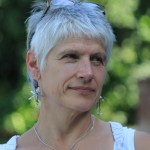
About Helen Titchen Beeth
Helen Titchen Beeth lives in the countryside in Flanders (Belgium). She is a lover of wild nature and mother of twins.
References
[1] This understanding/interpretation is based on the ‘mainstream’ assumptions about the history of homo sapiens. Less widely-known evidence suggests that an earlier global high civilization was wiped out by a cataclysm some 11, 500 years ago, which imprinted massive trauma into our species memory. Barbara Hand Clow, Awakening the Planetary Mind (2011).
[2] With the strong exception of the mystical strands of those religions!
[3] Adapted from The Dream of the Cosmos, by Anne Baring. Archive Publishing, 2013.
[4] The Cosmic Hologram, Jude Currivan. Inner Traditions, 2017.
[5] The Dream of the Cosmos, Anne Baring.
[6] Grateful to Charles Eisenstein for this powerfully evocative phrase.
[7] See also the series of Kosmos articles (2012-13) on Collective Presencing co-authored with Ria Baeck.
[8] See my article in the 2016 spring/summer edition of Kosmos Journal.
[9] This section on the Fourfold Practice is adapted from the Companion Guide to the Art of Hosting compiled by Steve Ryman and myself in early 2016. My gratitude to Steve, who was the main author of that section. [Where is the Companion Guide published (book, article, website…)?]It isn’t openly available to the public.
[10] In essence, our entire cultural manifestation is a conversation, one which has become ever more global, intense, and polarized through our use of information technologies—hence, the importance and potential of developing our conversational capacity!
[11] See also http://www.margaretwheatley.com/articles/Leadership-in-Age-of-Complexity.pdf
[12] Such methodologies include Circle, Open Space Technology, The World Café, Appreciative Inquiry, etc.
[13] Borrowed from the practice of Open Space Technology.
Freedom to Make Music
Freedom to Make Music
The Pros and Cons Program in Canada mentors people who are incarcerated in a music program that focuses on rehabilitation and restorative justice. The program was founded by Hugh Christopher Brown. He and the incarcerated individuals write, arrange, and record songs entirely within the confines of the prison walls. All music from the program is given freely and anonymously and is downloadable from their website. It is the wish of everyone involved that any monies be directed to three extremely worthy charities listed on their website. Chris Brown spoke to Kosmos about the Pros and Cons Program inception, ethos, recent developments, and plans for the future.
“This civilization has to take responsibility for itself beyond warehousing human beings, and beyond just our acceptance of collective punishment. I’m offering a microphone and something else…” —Hugh Christopher Brown
Kari Auerbach | As founder of Pros and Cons, can you tell me a little bit about the events or the journey that led up to the founding of this program?
Chris Brown | Yes, I started a music studio up on Wolfe Island, which is across the St. Lawrence River from the mainland of Kingston, Ontario, Canada. Kingston is the prison capital of Canada; there are seven prisons there. Everybody in that area is connected to the prison in some way, and one of the deep ways was by the agricultural program, a 200-year-old farming program inside the prisons where they grew food for the food bank and for other institutions. The inmates learned farm skills and animal care, and they developed close relationships with the animals. Then, Stephen Harper’s government decided to destroy that program, which had a 0.1% recidivism rate, meaning if you went through that program, you were less likely to re-offend. So, why destroy a successful program? A lot of my friends who are farmers were getting arrested during the protests. I remember a few of my farmer friends saying, “Chris, you go sing about it.” I thought, “Well, I just need to get inside and do something positive.” I play music, so I just started going inside and playing music.
Kari | What does social justice mean to you? Can you recall the birth of social justice in your music, or is it just an ingrained symbiosis?
Chris | When I was 15 years old, Gil Scott-Heron played in Toronto and I had a great epiphany watching him talk so eloquently about the social temperature of the day. His singing and his social engagement were one and the same. I realized that music has always been about expressing the human condition. Beethoven has a whole symphony set in a prison. What we now know as protest songs are just songs of people’s lives. Secondly, it’s the aspect of ceremony. I grew up Catholic, which has many tiers to it, but certainly music was always ritualized for me as a kid—adding music to the fold of an effort, whether to ease people’s lives or to raise money for a certain cause.
Kari | Tell me about the music sessions you do with people in prisons—how much do you lead or guide? How collaborative are the sessions?

photo: © 2014 Kristen Ritchie
Chris | It’s ever-evolving. The first time I was in there, I just took a guitar… and I was terrified. I’d never been in a prison before, and there were 17 chairs in a semicircle with one in the middle that I was supposed to sit in. I just sat in it and sang a couple of songs. Then I said, “Does anybody know a song?” and they sang to me. A couple of them indicated they were in the chapel choir and they sang a hymn I happened to know, so I went over and sat at the organ and accompanied them. Before you knew it, two hours had passed, because we just started exchanging songs. That was the first day.
The following week, a whole bunch of guys brought notebooks with writing in them. There were songs, poems, and journals. We started talking about writing and right about then, I was asked to do a recording for charity, a symphony or anything of my choosing, so I said, “I want to use inmates,” and I got permission. That was the first recording that we did, their version of my song “Oblivion.” By then I could see everybody was really interested in the process of recording. We ended up making a whole record, and over the course of that, we had to bring the gear in every week, set it up and tear it down. Everyone involved became very acquainted with the technical aspects of engineering. These days, we’ve won the right to build studios in the institutions for the recording equipment, computers, and instruments because that way they’re not dependent on me being there. It’s been working generationally because prison is a very transient place. People are moved from one institution to the other, guards and corrections officers are shifted around continuously, and yet this program has grown by shared knowledge. In the first institution where we started, it’s estimated that there’s been over a thousand people who’ve come through the program. We’re on, I’d say generation four or five of the group, the information gets shared and passed down so that now—as you can hear—the production value is exponentially better. Essentially, what I do now is to come in and listen to what they’re doing and make my comments. Occasionally there’s something that needs to be pulled together, and I also supply the gear. I’m bringing in new instruments every week when I come.
Selah
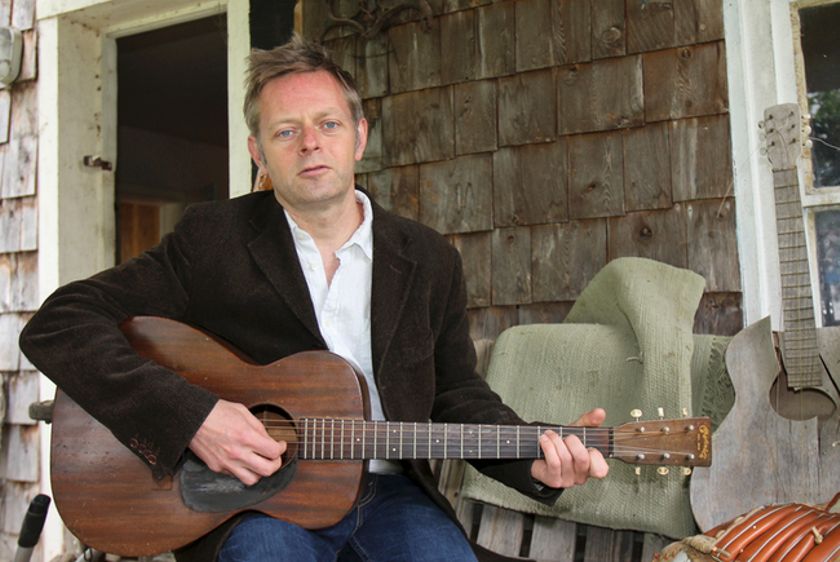
Oblivion
Kari | Maybe, if inmates would think of themselves as a singer, as a producer, as a recording engineer, then it eclipses what got them there and gives them a place to move on from, which is so important. The engineering and technical aspect is great because that is another set of skills for when they get out.
Chris | Absolutely.
Kari | I want to know how the songs get chosen. You mentioned that they’re writing more and more.
Chris | The way it works is different for each institution actually. In the women’s institution, Grand Valley, John Copping just finished the second record. He works one-on-one with people who bring their songs to him. John Copping is a great artist, songwriter, producer, who started a wonderful music program called Black Ball serving youth in the Toronto area. In Joyce, there are over 50 participants and it’s about them sorting out with each other when they get to use the gear. They’ll go in individually for a couple of hours at a time and work on their own songs and then they’ll ask each other to collaborate. Then there is Collins Bay, where we’ve just started up. One of the graduates is getting folks who were recently incarcerated back in to be able to mentor because that’s a very important step.
Kari | Nice! I wanted to ask you how the program has evolved since it started. Material-wise and methodology too, it seems it has evolved. Can you think of any other ways?
Chris | The music has gone around the globe, and it’s raised the money for a number of causes, you can see the consequence of people’s personal actions inside writing and playing. They can feel this echo from it that’s very positive. A man serving a life sentence said to me the other day that when he was working, “The afternoon went by like a shot,” because you’re pouring yourself into something meaningful. That evolution of folks developing a means of utilizing their life energy towards their own betterment, which then raises a positive societal impact, is a really important formula.
My own evolution has been a continual education in terms of boundaries and the implications of the work. I create a contract in a sense with people I’m working with. I don’t want to know what they’ve done unless they want to tell me. I don’t need to know what they’ve done because that’s already been settled. They’ve been tried and convicted and they’re serving their time. I’m offering a microphone and something else.
Kari | I think a very important and beautiful aspect of the way you work is just meeting people where they are and elevating their skills, working, collaborating and moving on from there.
Chris | When they begin to feel right about that, invariably they want to talk to me about what their crimes are. At that point, we’ve passed that crime being an identity. It’s an aspect of their lives, and I think that’s a more advantageous angle for comprehending it and taking responsibility for it. What’s interesting now is that people are getting out and are choosing whether or not they want to be publicly engaged with the music and the work. If they do, then they’re talking about their crimes, often publicly, which is a huge step. That’s really owning something. All of this has to be done with supreme sensitivity, foremost to victims, and then to these folks who’ve gone through very intense events in their lives. For them to step out of the fray and say, “Yes, I’ve done this and here’s what the impacts are on other people’s lives and my own.” It’s restorative justice. This is always an evolution. It will always be dynamic and case sensitive.
Video
TedX Talk
Kari | What have been some of the transformational aspects of the program for you, for the participants, and for the institutions?
Chris | It’s given me incredible compassion and wonder at some of these corrections officials who I work with who are sainted, though not all of them. I’ve said to corrections officials, “There are former offenders that I wouldn’t want to hang out with, there are corrections officials, I wouldn’t want to hang out with.” And the officials agreed. It’s an incredibly intense position and I admire the dedication. A lot of people you meet working in corrections and in the justice world have themselves experienced victimhood or violence in their family and have decided to make a difference in the world.
Kari | And the prison chaplain…
Chris | Yes, Kate Johnson, who initially got me in there. She was very instrumental in getting this started. A real scion of restorative justice, who has given me great education and insight, and who I sometimes turn to still. I have deep respect for the folks I see working within a system and doing so compassionately, bravely, and sticking their necks out to make differences without being bureaucratic. When you have a population that has zero advocacy, guess what? You can sit on your hands all day, and for those who choose not to, it’s amazing.
Kari | Are the various institutions generally supportive of the Pros and Cons Program?
Chris | Well, yes, because we’re creating a more loving and cooperative population. Relationships are developing among people in prisons, where normally isolation and threat are the norm. It’s providing programming and psychological services that were totally slashed under the conservative governments. It really is about your intention. We developed these justice systems and then some dude thinks, “Hey, great, I can make money off that!” Our former prime minister stood behind a podium that said, “Victims first,” as he was announcing these mandatory minimums for marijuana use. Just who is the victim? Depends on your definition of victim! Speaking as a Caucasian male myself, it really is a favorite stance of Caucasian males who don’t think they’re getting what they were born to get, and it’s a degradation of our own personage, it’s a degradation of masculinity, of culture, of everything. For instance, it’s why I see some politicians do not want an Aboriginal person in the room because it takes the light off of their victim status. They didn’t want a woman around for the same reason. Again, this ties back to the beginning in terms of what inmates or people who’ve done bad things are used for. They’re used to rationalize that kind of antisocial behavior. We have to start calling it out, because it’s ruinous.
Artwork by Inmates | (anonymous by request)
Courtesy Pros and Cons Program, click to enlarge
Kari | From the work you’ve done with former offenders, what do you think are some of the common misconceptions that myself or others on the outside might have about who these people are?
Chris | It’s funny, because immediately I go to the way prison is marketed. As a musician, I’ve seen the way record companies a decade ago or more, got involved with the prison system in America for the sake of marketing urban music, and it’s heinous. The history is there—the way that it’s marketed in terms of who survived prison and they’re street and they’re tough. Here we are on the outside now and we can look at them and kind of be scared of them and be titillated. One of the people serving a life sentence that I work with is writing a rap called, “You’re working too hard. Don’t be a fraud” which is all about that. The people serving life sentences are kind of like the elders in prison. I’m thankful for people that get out of prison and have a job of any kind, but that romantic, I’ll call it a ‘ghettoization’ of incarceration, is not working. It’s not serving people. I watch the patience, the camaraderie. If you’re really going to survive it, Malcolm X is a great example of someone who taught himself to read and who educated himself in prison, and that’s repeated millions of times! That’s really what it’s about. Yeah, you have to know how to defend yourself but, the principal way to defend yourself is by knowing who you are and not being seduced into pettiness. You can fight over a dime in prison literally. Small things are worth so much in there. Or, you can choose to do something else, and the music is helping. I know it is. A participant’s mother said to me, “You’re saving my son’s life.” and I said, “No, your son’s saving his own life. I’m very happy to take part in that. It’s his own decisions and his own courage.” These are people, it’s a population, and it’s a facet of our society that is kept separate for many reasons—genuine fear, but also laziness and exploitation. Some say that where we’ve had civilization, we’ve had crime. Well, where we’ve had crime, we’ve had sweat lodges, we’ve had restorative justice.
Kari | What is the prevalence of mental health issues among people who are incarcerated?
Chris | Eighty percent are suffering from some form of mental illness. And those are just the ones who are diagnosed. The convictions are just punctuation marks on a sentence that has been running for a long time. It ties back into the outside in terms of opportunity, education, and child welfare, primarily. We know how people look demographically at data and say, “This population doesn’t have enough men raising children.” Okay, why?
Kendrick Lamar said something really great a couple of years ago in a Rolling Stone interview. When asked why he thought he had escaped going to prison like so many of his peers had, he said, “Because I had a father in my life and having a man around, it helps you deal with emotions.” That’s a very deep statement. We don’t all have fathers around for all kinds of reasons, cultural and otherwise. We have to figure out how we attend to that. What is taking the place of the father? Well, in prison you find it, in mob society you find it… these things replace family. If you stigmatize and separate, if you do this political thing, all it’s doing is running people to these alternate systems that eventually become confrontational with one another and themselves.
Delicate Love

LINKS
https://prosandconsprogram.com/
https://prosandconsprogram.com/postcards/ – Listen Download – Album ‘Postcards From The County’
https://prosandconsprogram.com/undisclosed-location/ – Listen, Download – Album ‘Undisclosed Location’
Kari | You’ve made another very important point there, about that need to belong and the systems we may or may not have that address that need. Thank you, now can you tell us a little bit about how the program has grown and what is on the horizon for and from the Pros and Cons program?
Chris | We are about to receive charitable status, meaning we’ll be able to issue tax receipts, which is amazing For the past three years, we’ve been generously supported by the David Rockefeller Fund, which is a wonderful restorative justice fund. They’ve really allowed us to grow and prosper to the point where we’re now in three institutions. We have others with their doors open to us. I just need to clone myself, or we get charitable status, we get money in, and I’m able to employ more people. Currently, I employ folks when they get out of prison to help with the work, and we need to hire lawyers and other staff.
Musically, there’s a second women’s record that was just finished, due out in the coming months. We have over 150 songs from the first institution, which I think we’re going to release as an album per month over the course of a year. We have a couple of new institutions on the rise and, as I said, we’re creating these open-source materials so that anybody can emulate them around the world. Increasingly too, the people who come through the program are able to speak to these matters and we’re getting to a place where they can do interviews and speaking engagements. As I said to them, they’re the experts. They’re the ones who can come inside and help. They’re the ones who can speak to the outside and start really taking those walls down.
Kari | And this provides a wonderful opportunity for someone who might otherwise struggle to find employment due to their record.
Chris | That’s exactly what I’m doing currently, out of my own means. Once we are a charity, we’ll be able to do that in a much broader way.
Kari | Good. Well, if anybody is reading that’s in Canada and wants to help…
Chris | Yes. They can contact us through the website prosandconsprogram.com. We have methods of accepting donations. Donated instruments are great. They can also donate right there on the site to our chosen charities, Candace House, which is a really amazing charity started and run by Wilma Derksen in Winnipeg.
Kari | Can people donate skills, like pro bono lawyers?
Chris | Yes.
Kari | Great! Well, it’s been wonderful talking to you about this awesome program. Thank you so much, Chris!
Chris | You too.
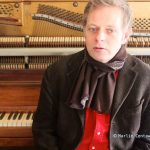
About Hugh Christopher Brown
Born in Toronto, Hugh Chris Brown is a singer, songwriter, multi instrumentalist, recording engineer, producer, head of a record label, activist and founder of the Pros and Cons Program. His Pros and Cons music program mentors inmates through all aspects of making music, from writing, to recording and releasing it. Beyond his own music, Chris has performed, collaborated with and recorded for many artists – Ani DiFranco, Joan As Police Woman, Tony Scherr, Barenaked Ladies, Ashley MacIsaac, Crash Test Dummies and Jen Chapin, to name a few.
Global Social Witnessing
Global Social Witnessing
You swipe through your favourite news site while sitting in a train, and you enter the typical bombardment of information—“four degrees climate change temperature rise possible,” “rainforest burning,” “Iran-US-tension on the rise,” “East Germany soon run by right-wing populists?” Can you feel the contraction of your chest, the narrowing down of your attention, the closing of your heart? What if there was a reset button? What if we could take another breath before re-entering the Anthropocene?
Almost unnoticed, there is a new movement being born. Young people in Generation Z are waking up. They are aware that change will take more than just politics; it will take a shift of mind and consciousness. And they are equipped with the most powerful technology ever in human history. What if we press the reset button, and free our minds from an overload of information, of unnoticed negative emotional charge, or apathy? What if we decolonize our attention and start to simply witness?
We are all aware that the challenges the world is facing today—with even more tomorrow—such as climate change, scarcity of resources, social-systemic injustice, and migration, call upon the human ability to co-create solutions on a global level, while being aware of local realities. However, it is questionable whether our collective levels of awareness and collaboration measure up to the complexities we are facing globally. Rather, we seem to be ill-prepared for complex solutions. The tough question seems to be: how do we move fluidly from the personal to the global without being trapped in abstract charts and lofty globalist theories, but rather in an embodied experience of the world process as it unfolds? As educated students and professionals in academia, we often consider ourselves to be global citizens who hold a more complex view of things than on average. But, is this true? We may identify ourselves as ‘global citizens’ cognitively, but do we embody it? Are we aware of our own subconscious biases and ideologies? How can global citizenship become a practice, rather than an identity?
Why Practice Global Citizenship?
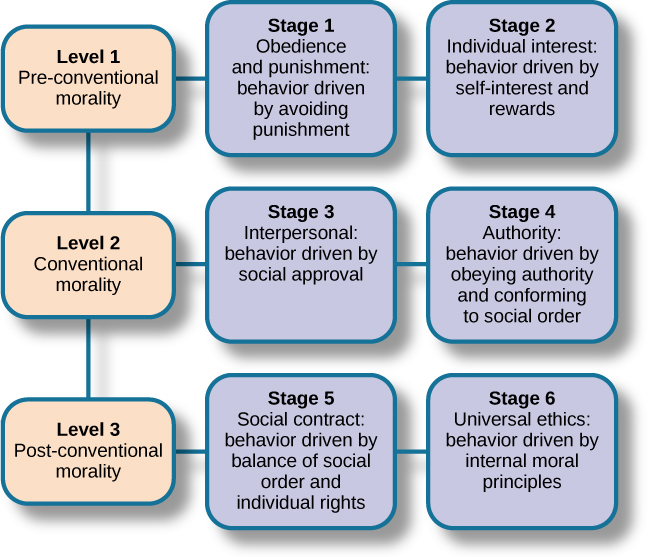 Evolutionary biologists and developmental psychologists have found that, generally speaking, humans develop through a sequence of stages, both individually and collectively, toward greater inclusion and complexity. These stages progress from survival-focused, egocentric stages, through ethnocentric, toward more cosmopolitan ways of sense making and acting in the world. This means, very simply, that even though every human citizen is born on the globe, no one is born as a global citizen; i.e., no one comes to life considering the wellbeing of all. Thus, this is an acquired stage, one that requires a ‘holding’ environment created through education, life experience, self-awareness, and dialogic skills, based on deep listening and exposure to various learning communities. This will very likely look quite different, depending on the geographical and cultural context.
Evolutionary biologists and developmental psychologists have found that, generally speaking, humans develop through a sequence of stages, both individually and collectively, toward greater inclusion and complexity. These stages progress from survival-focused, egocentric stages, through ethnocentric, toward more cosmopolitan ways of sense making and acting in the world. This means, very simply, that even though every human citizen is born on the globe, no one is born as a global citizen; i.e., no one comes to life considering the wellbeing of all. Thus, this is an acquired stage, one that requires a ‘holding’ environment created through education, life experience, self-awareness, and dialogic skills, based on deep listening and exposure to various learning communities. This will very likely look quite different, depending on the geographical and cultural context.
The Awareness-side of Global Issues
“I used to think that top environmental problems were biodiversity loss, ecosystem collapse and climate change. I thought that thirty years of good science could address these problems. I was wrong. The top environmental problems are selfishness, greed and apathy, and to deal with these we need a cultural and spiritual transformation. And we scientists don’t know how to do that.”
– Gus Speth, US advisor on climate change[1]
This quote has gone viral as a Facebook meme for some time. It illustrates what the scholars and practitioners of systems change and institutional or organizational development have been pointing out for many decades: the root causes of systemic issues often lie on the level of ‘mental models,’ ‘the interior condition of the intervener,’ or the ‘quality of attention and dialogue.’ It has become commonplace even among tech giants to fear the dangers of humanity’s technological advancement. Thus, global activists, like Nicanor Perlas from the Philippines, stress the importance of moral and spiritual evolution to measure up to our technological possibilities.[2]
The Neuroplasticity of Global Politics: How Do We Practice It?
The good news is that we humans are equipped with a brain that learns. Neuroplasticity has shown that the capacity for compassion and empathy, for instance, can be deliberately practiced and even result in the growth of cortical thickness in respective brain areas.[3] At least we know now that humans can, indeed, systematically change their ‘interior condition.’ Such brain changes, however, do not result from the way we usually engage our mind, e.g., in reading the news, obsessive consumption, fear-driven control, or worse, apathy and dissociation. These will not result in an increase in compassion, or the progression toward a more complex and integrated sense-making. What is required is deliberate, mindful, and embodied awareness, while engaging with the world events at hand. Social cognition, the ‘inner place’ from which humans relate to others, comes in varied forms. While we can only empathically relate to a limited number of friends in our tribe or in-group, our cognitive perspective-taking and compassion skills can be stretched to include those former ‘out-group’ members who are very different from us.
Global Social Witnessing
To briefly summarize our current predicament: (a) we live in a highly-interconnected world; (b) current and forthcoming major challenges can only be solved globally; (c) for chances of human survival to increase, a number of competencies, including the development of awareness and a global identity, need to better match the level of complexity we actually engage in; and (d) practice can actually develop these competencies, as suggested by neuroscience. This leads us to the proposition of Global Social Witnessing (GSW) as an awareness-based practice of global citizenship. To quote Gus Speth’s words, lets learn “how to do that.” This practice should not be read as a recipe to save the planet; nor do we claim to know exactly what this practice ‘should’ look like. This will very likely change depending on place, time, historic context, and culture. But, we do believe that GSW is very worthwhile, if considered as a missing piece in our understanding and practice of global responsibility. The inspiration for this comes from both ancient traditions and modern-day teachers of consciousness development.
What is GSW?
‘Global’ refers to large-scale events and processes affecting large numbers of people or the planet as a whole.
‘Social’ refers to the fact of interrelatedness of humanity.
‘Witnessing’ points to the capacity of fully attending to, and testifying to, critical events.
GSW, then, is at its core the emergent human capacity to mindfully attend to global events with an embodied awareness, thereby creating an ‘inner world space’ mirroring these events.[4]
How Does GSW Work?
As a practice of contemplative social cognition, GSW involves a sequence of micro-actions: a conscious choice to pay attention to world events, to allow oneself to be affected by them, to become aware of phenomenal impressions on various levels (mental, emotional, somatic, relational), to attentively remain with these impressions, and their unfoldment within one’s awareness.
Group Practice
GSW can be practiced individually or by a collective entity. The potential collective practices are two-fold. First, they are initiated through a shared intention of the collective, while a particular global event is mirrored simultaneously within each individual member. Secondly, the collective entity’s social field mirrors the complex systemic dynamics of the given global event, and its potential unfolding. In this way, the various elements of that event are represented by group members. Examples of this second type of practice are Social Presencing Theatre and Systemic Constellation Work.
Impact of Social Presencing Theater
What’s the Outcome?
Attempts to address threatening global events like climate change have been found to lead to feelings of apathy, fear, or overwhelm in both individuals and groups. As a consequence of these negative effects, such topics are largely avoided or repressed.[5] GSW counteracts this avoidance as a therapy for these social pathologies through deliberate self- and world-awareness and engaged participation that fosters the re-establishment of formerly broken systemic feedback loops.
As mentioned earlier, generation Z is, in particular, aware of and confronted with the complex contradictions of the interconnected, interdependent systems in our world. An essential capacity for future education to provide is to help students practice a global identity in order to respond mindfully and compassionately to the issues at stake, rather than just feeling overwhelmed by their magnitude and complexity. Confrontation with real world issues, and the struggle to solve them, becomes the true site of learning. In this context, GSW is an educational practice to help establish a cognitive and affective foundation for global citizenship.
This original essay was first published on 3rd Space. It appears here with permission.
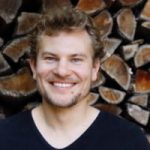
About Adrian Wagner
Doctoral candidate of Thomas Hübl’s AIS Graduate Program, social worker, political scientist, and cofounder of Teal Wave Consulting. Adrian currently lives and works in a community in the Black Forest where he cofounded the coworking space, Waldraum e.V. He loves Japanese martial arts, body-based meditation, poetry, and dancing tango.
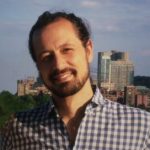
About Lukas Herrmann
Lukas Herrmann is an action researcher and PhD student with Heidelberg University, Germany. He worked at the Max Planck Institute for Social Neuroscience, and published on the contemplative training of perspective-taking and empathy. He studied psychology in Freiburg and Berlin (Humboldt University), Germany, and is a trained family therapist.
Notes
1. Gus Speth, Practicing Sustainability, ed. Guruprasad Madhavan et al. (New York: Springer Science & Business Media, 2012).
2. Nicanor Perlas, Humanity’s Last Stand: The Challenge of Artificial Intelligence – A Spiritual-Scientific Response (Forest Row, UK: Temple Lodge Publishing, 2018.
3. Sofie L.Valk et al., “Structural plasticity of the social brain: Differential change after socio-affective and cognitive mental training,” Science Advances 3.10 (2017): e1700489.
4. Kazuma Matoba, “The refugee crisis as a test of our collective conscience: Global perspective taking and witnessing” (paper presented at Innovative and Transformational Ideas to Improve the Development and Policy Response to Forced Displacement, Virginia Tech, VA, June 7, 2019), available at: https://www.researchgate.net/publication/334138539 The refugee crisis as a test of our collective conscience Global perspective taking and witnessing
5. Joanna Macy, “Working Through Environmental Despair,” Ecopsychology: Restoring the Earth, Healing the Mind 2, ed. Theodore Roszak et al. (San Francisco: Sierra Club Press, 1995), 40–259.
Collective Trauma and Our Emerging Future
Collective Trauma and Our Emerging Future
Dr. Claus Otto Scharmer
MIT SENIOR LECTURER, FOUNDER OF THE PRESENCING INSTITUTE
Thomas Hübl
SPEAKER, AUTHOR, AND FOUNDER OF THE ACADEMY OF INNER SCIENCE
Thomas | I’m so happy that you are with us today, Otto. First of all, a very warm welcome and thank you for joining us so generously here at the Summit.
Otto | Thank you for having me. It’s a real joy and pleasure, Thomas, to reconnect with you personally after our first meeting here in Cambridge, and the virtual conversation we had a few months ago. I really look forward to continuing this conversation.
Thomas | I think that it’s perfect to have this conversation now, exploring a multidisciplinary approach to the phenomenon of collective trauma. How does it affect our social systems? How does it affect our political system? There are so many layers from personal health up to global questions.
Otto | The issue of trauma just in my own experience over the past decade or so, particularly over the past five or so years, seems to be increasingly coming up wherever I go. So, whenever you work with social systems, with deeper levels of systems change, you bump into that phenomenon. On an individual level, but very often on a collective level, we have to deal with the phenomenon of trauma. I’m not really any specialist on trauma, but from my professional expertise—which is awareness-based systems change, working with collective larger systems and deep change into learning processes—I’m bumping into it all the time.
Thomas | And something that you also told me in the pre-conversation that resonates a lot with my experience and working in this collective trauma process is, actually, that trauma and collective trauma creates absence. There is a part of me that is disembodied, there is a part of my emotional experience I cannot inhabit. There is maybe a part of my mental capacity that might shut down. There’s definitely a part of my relational capacity that is being hurt, and so on, into social systems. Because you worked a lot on the Theory U, which I think many people may have heard about, I would love to hear you speak a bit about the principle of absence or absencing that you developed.
Otto | Yes, I’m happy to do that. Some 28-plus years ago, I came here to MIT in Boston, because of the systems thinking framework, and really how to address the bigger issues of our time with that framework. It is basically the distinction between visible behavior—what appears more on the surface on the one hand—and that which doesn’t appear—the deeper structures, the paradigms of thought, and the deeper sources from which our thinking, from which awareness, consciousness and action, is arising from. So, it’s this distinction between symptoms and these deeper root issues. . . . And when you think about the symptoms today, in the Theory U context, I see three major divides happening in many countries and contexts and systems. The ecological divide, the social divide, and the spiritual divide, which arise from the disconnect from self to nature, self to other, and self to self. That’s just the background.
When we look at that, then the question of trauma really is, on the one hand, that history and many issues we have in our society are reenactments of trauma. Violence usually happens when you reactivate the trauma. We cannot understand the Middle East without the Crusades. We cannot understand it without the Holocaust. They are deeper trauma; they can be activated, and then they result in violence. From one point you can say, history is a repetition of a reenactment of trauma from the past. And there’s a lot of evidence for that. But on the other hand, I think that may also be blinding us when we are just limited to that perspective.
There’s also something new happening. In the 20th century, it was totalitarianism with Hitler and Stalin and so on, that we hadn’t seen before. And in this century, something is happening that, again, cannot be understood with just a 20th century lens.
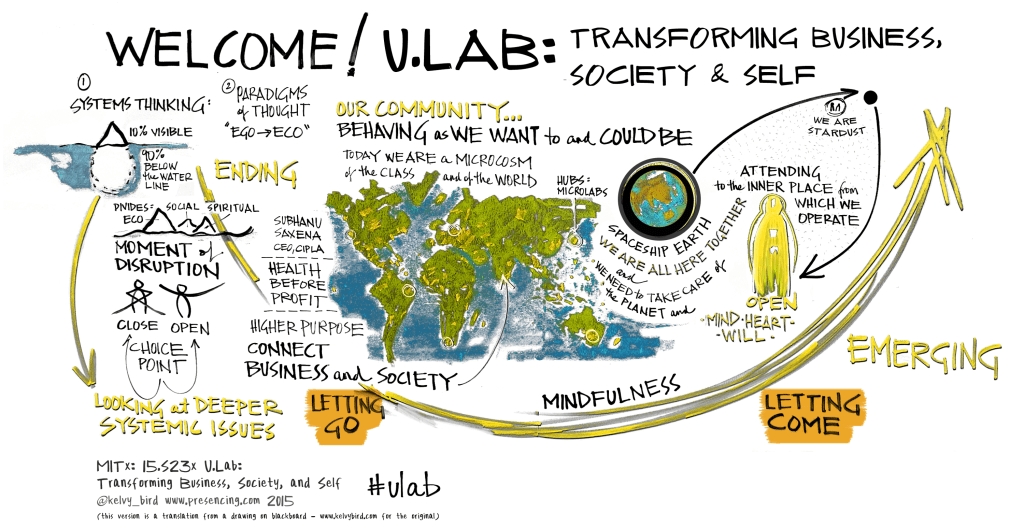
This image comes from my colleague in Cambridge, Kelvy Bird, who also is a cofounder of the Presencing Institute. And it depicts the current moment we are living in, which is a moment of disruption as seen on the left-hand side. And moment of disruption means we’re standing here, and the future is going to be different. We don’t know exactly how it will be different, we know less about that. But what we know the least about is actually how to move from here to there.
And the presencing perspective on this situation is a perspective that suggests that, in order to deal with disruption, in order to move from here to there, we have to go on a journey. In part, it is an outer journey, which means going to the edges of the system. And in part, it is an inner journey that connects to the deeper layers of our own experience. Because, if we connect to the true deep experience of the now, we realize that the future is already here. We realize that in our current experience, it’s not only based on the current reality or driven by the past, but that the future is already here in the deepest experience of the now. And the Theory U journey is basically a journey that brings together this outer and this inner journey.
When we talk about the current situation in the 21st century, one of the few things most people would agree on is that, yes, we do live in an age of disruption. That means the future is going to be different from the past. And we see, I believe, in all countries the same pattern, which is three types of responses. The first one is “same old, same old.” And that is something that, by the month, becomes less and less tenable. The two main responses that remain are: turning backward or leaning forward. Turning backward is basically grounded in, and operated by, a freeze reaction. Freezing the mind, the heart, and the will. Also known as ignorance, hate, and fear.
Leaning forward into something that we don’t know—leaning into the emerging future—requires us to open the mind, open the heart, and open the will, which now only works if we can access our capacity for curiosity, compassion, and courage. I call this the cycle of presencing. Becoming present and connecting with your highest future possibility. And the other one is absencing.
The journey of the ‘U’, or the journey of the presencing cycle, is basically a journey of seeing, sensing, and presencing. Presencing is really connecting to source. And the gateways, below, are the work of Francisco Varela, who is the founder of Mind & Life Institute and coauthor of On Becoming Aware. The essence of what he synthesized is the core process of becoming aware, where he synthesized meditation and phenomenology into three core capacities that he called suspending, redirecting, and letting go.
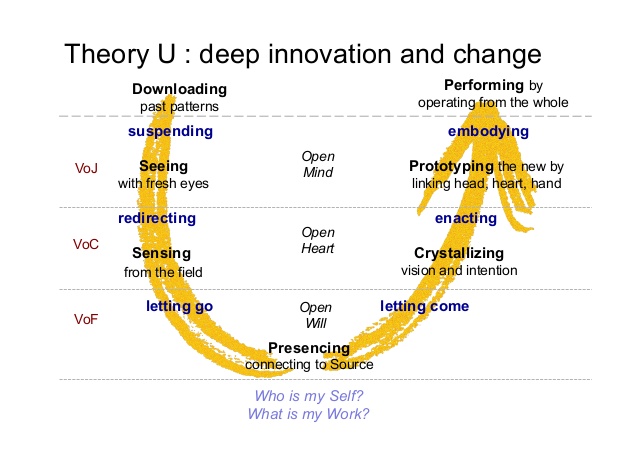
Those are the gateways into these capacities. Suspending old habits of thought leads to seeing with fresh eyes. That’s the open mind. Redirecting, now, in the social realm, I interpret as kind of looking at a situation not through my eyes, but the eyes of the other—empathic seeing and listening of the heart. And then the letting go, is letting go of the old and ‘letting come’ of what is wanting to emerge.
Now, the interesting thing about absencing is that it’s the exact mirror image. So, it’s not about seeing, but blinding. It’s not about sensing, but it’s de-sensing. Getting stuck inside your skin as an individual, but also in a collective skin. And it’s not about connecting to source and presencing, but disconnecting from your highest future possibility.
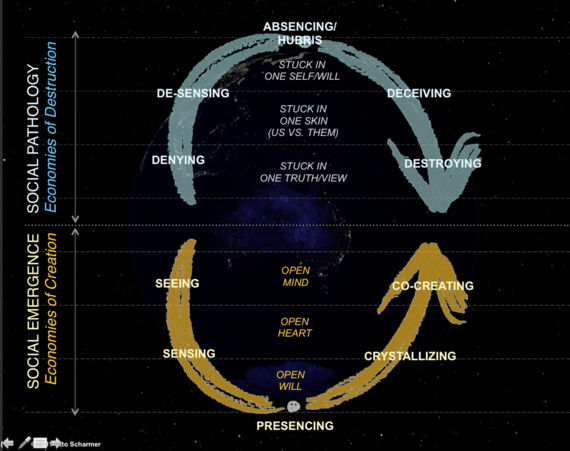
Absencing, and the gateways into that—denial, entrenching, and holding on—I probably don’t need to explain that we see a lot of this in our current society. We see societies falling apart. You can watch it here in the United States, but also in many other countries. It is a social phenomenon that we see in many different forms: we see it in politics, we also see it in the economy, and we see it in communication. Blinding and de-sensing means you are disconnecting horizontally. You’re disconnecting from what’s going on around you. And the absencing is the vertical disconnect. You disconnect from your higher self, from your highest future possibility.
One of the most significant developments over the past decades is that capitalism has shifted from a financial capitalism to a surveillance capitalism, which Shoshana Zuboff describes in her book, The Age of Surveillance Capitalism. So, manipulation, blaming others, we see those phenomena. And the result is enacting violence. I think about violence in terms of three. There’s direct violence and there’s structural violence. Structural violence is all violence where you have victims, but not a person seen as a perpetrator. For example, hunger, underdevelopment—these are forms of violence that we see in many countries. That’s structural violence. It’s the economic structure that’s behind it. It’s not an individual; it’s our collective actions. And then I think that there is actually a third type of violence, which I call attentional violence. And with that I mean attentional violence is to not see another person, another human being, in terms of their highest future possibility.
When you are not seen in a society, that’s a form of violence that is inflicted upon you, resulting in destruction of nature, other, and self—the three divides I mentioned earlier. Presencing is basically ‘letting come’; crystallizing; and giving birth to, prototyping, and then embodying, the new. It’s really about bringing something into reality, a dormant deeper potential. Kind of allowing that, and birthing that into reality—allowing something to grow within and then move into reality. . . . I think this might be a helpful contribution. Because it is a framework and a language that allows us to not only look at the trauma that has been generated in the past, but also to look at the deeper making of trauma and direct structural and attentional violence that is happening now, unique to our century. And in that, each of us is participating on either side of the equation, one way or another.
Thomas | Yes; first of all, amazing. I like the word “absencing” because I think it describes the absent part, the unseen part, which is buried and we don’t really know that it’s buried. I think that’s a very powerful description of many symptoms that are actually the result of what I would call the collective trauma field.
I often describe the collective trauma field as: imagine you’re growing up in an apartment and, all your life, you never took a step outside. And one day somebody visits you and asks you, “How does the house look from outside?” And you can’t tell them because you never saw it. You just saw your apartment from the inside. What I’m saying is that I believe none of us has ever seen the world outside of the thousands of years of trauma. But the thing is, the absent part of us is usually absent and only visible through symptoms, but never is the thing itself.
Maybe you can expand a little more on the danger of our time, also given technology. You have talked about steering collective behavior, manipulating collective behavior, and many other symptoms or issues. So, what is the potential dark side or dangerous side in our time with the current tech development? And maybe, what is a human centric or humane way of developing technology so that it really serves us?
Otto | When you look at the absencing cycle, it is kind of supercharged by technology and by tech companies. And that’s basically why Shoshana Zuboff and The Age of Surveillance Capitalism analysis is so important. Because you could say today in the world, there are really two narratives going on. It’s the absencing story and all the problems around that. And then there is the deeper human awakening that’s happening across the planet.
That’s the other narrative. And that is the most important story not told. Why? Because the whole collective conversation is absorbed through the amplification of the absencing that happens through social media, that happens through all sorts of traditional media. For example, when you share fake news, your tweet is 40 percent more likely—according to a recent MIT study—to be reshared than accurate news. In other words, the reason why we see an amplification of absencing, is that for the big data companies like Facebook, it’s better business. That’s factor number one. It’s the business model, it’s the core of the business model.
And the second one has to do with dark money. So, dark money is very visible here in the United States. In the early 2000s, the majority of people wanted a carbon tax; they wanted to tax carbon in order to deal with climate change. And then the climate denial industry got created by an investment of $500 billion through the Koch brothers and all their networks. It’s well described in the book, Dark Money. And the result is that, basically, the political class, and the parliamentarian decision-makers, and the public media, but also what happens in universities, is a function of what serves that special interest group. So, number two is special interest groups. And the influence these small groups have is a disproportionate influence on the political process.
These two problems point at two deeper evolutionary issues in our current moment: the evolution of our economy toward wellbeing for all, and the evolution of our democracy toward governance systems that are more direct, more dialogic, and also more distributive.
Technology is a function of the intention that we use when we design, distribute, and use technology. And the intention that Facebook is using, for example, is profit maximization, which means maximizing user engagement, which maximizes advertising revenue. And that’s why Facebook is one of the most valuable companies in the world. But the unintentional side effect is that it makes everyone’s life miserable. And it’s undermining democracy in many countries in the world. You could say that’s a lack of awareness we are amplifying.
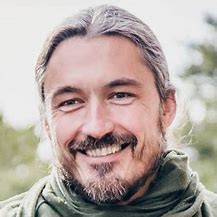 Thomas | What I see in your Theory U model is, I see the presencing and the source space is the space where we can rewrite evolution or human history while we are living it. It’s kind of a rewriting process. It’s like you can change the letters in the presence.
Thomas | What I see in your Theory U model is, I see the presencing and the source space is the space where we can rewrite evolution or human history while we are living it. It’s kind of a rewriting process. It’s like you can change the letters in the presence.
And the presence is also like the timelessness you experience in deep contemplation or meditation; it is actually the only way to see the current structures or possibilities or tendencies. And through an awareness process, bring in a new possibility, a new imprint. And it’s also my experience in the facilitation of large group collective trauma processes, that actually, ‘staying with’ is such a refined process. Just sometimes ‘staying with’ the transference patterns of people on to us, and what a person radiates in their inner architecture of the nervous system into the environment, and which tendencies a person radiates into his or her environment is affecting the environment. And I think that’s only possible in a state of presence.
But the past that we often talk about is the unintegrated history that becomes the ‘other.’ And in your words, with the absencing, it becomes the blaming—it becomes not being able to include, like othering. But also othering in space time, in the future, in the past. We fragment life. And the past is the unintegrated energy that affects me right now. Fears that affect me now. And that’s why the function that we talk about—‘staying with’—sounds, at the beginning, very simple. But in fact, is one of, I believe, the most complex functions that a facilitator basically needs to learn and express through experience.
‘Staying with’ is the capacity to witness creation. Because if you’re only in creation, you’re blind. You’re blinded by it, because you can’t see creation. So, you need contemplative practices in order to be able to witness and presence the process of creation.
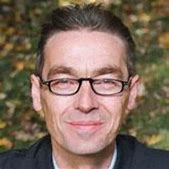 Otto | That is so interesting, Thomas. So, what comes to my mind listening to you is, the ‘staying with.’ It may look a little bit as if absencing is the opposite of presencing, but that’s not true. In reality, the presencing is grounded in the ‘staying with,’ and in the deeper connection, and holding the space.
Otto | That is so interesting, Thomas. So, what comes to my mind listening to you is, the ‘staying with.’ It may look a little bit as if absencing is the opposite of presencing, but that’s not true. In reality, the presencing is grounded in the ‘staying with,’ and in the deeper connection, and holding the space.
You could say fear is—you get too small—and then there’s really nothing. And the opposite of that is fanaticism. But courage is the holding of the space in between. Presencing is not the opposite of absencing. It’s kind of the middle way. There are always two different forms in which absencing can manifest. And that’s also true for our current age. I can move too much into ‘anti-this, anti-that.’ That’s one problem, and how absencing shows up and, basically, moves into direct violence one way or another. And we see the uptick in violence. But the other form of absencing shows up and is enabled through cynicism. Through disconnect, through not caring. That’s why this ‘staying with’ is a real key capacity that we need to build. Not only on the level of the individual, but also on the level of the collective.
Thomas | How can we support systems to go through such a process?
Otto | ‘Staying with’ is grounded in a number of deeper holding capacities that I will talk about in just a moment. And that are really, I believe, critical enabling conditions for this larger shift of consciousness that is beginning to happen in our society right now; to really bring that to the level of impact or the level of scale that’s necessary today. We have super-amplification in absencing through all kinds of social media and so forth. We do not have these amplification mechanisms on the presencing space. And what we need for that is awareness-based social technologies that make a system sense and see itself. . . . So, that’s kind of what we have been developing over the past 15 years, mostly through experimentation at the Presencing Institute.
And this is just one method that we have been coming up with under the leadership of my colleague and cofounder of the Presencing Institute, Arawana Hayashi. It’s something we call Social Presencing Theater.
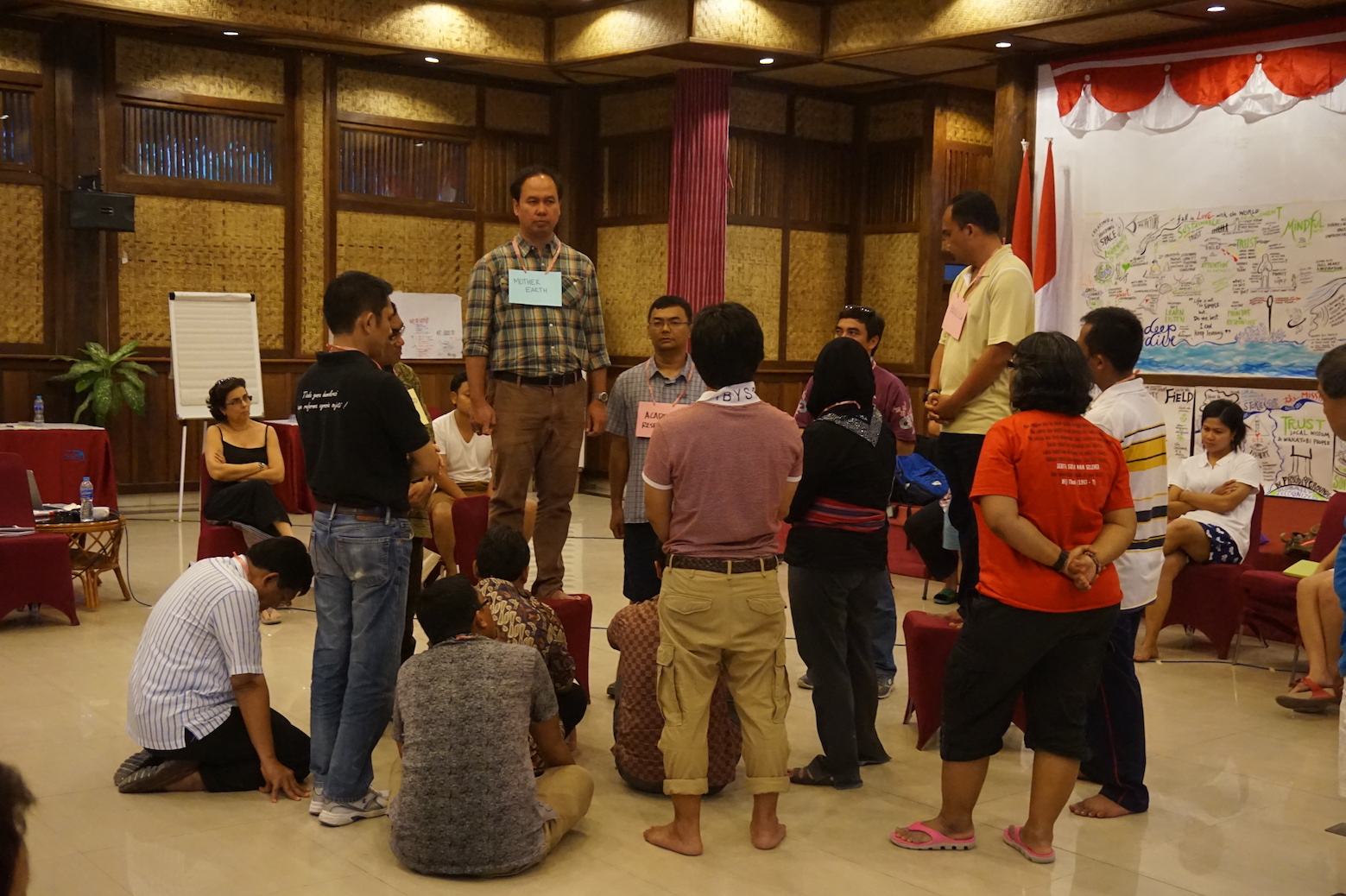
And based on what I said earlier—I talked about the ecological divide, the social divide, the spiritual divide—we always include these three roles. Ecological divide, how? The voice of Mother Earth.
And the social divide. How do you bring that in? Well, bring in the voice of the most marginalized people. That is, something different, someone different in each system. And then the spiritual divide is often kind of the voice of the future. It’s kind of the voice of the children, born or not yet born. It’s bringing in that. You need to step into the feeling of that role, and then you embody that with your body, with your gesture. And with a sentence that is summarizing that. And all that is being recorded and reflected on later.
So, it’s less facilitator driven and more like a collective mapping exercise that takes a deep scan into the deeper layers of the social system or the social field.
We need awareness-based social technologies that will allow us to move from individual to collective seeing. And from collective seeing to the deeper levels of sensing and connecting to source. And that’s in these tools. That’s the question of social technology to some degree. That often either we don’t have, or we don’t know exactly how to use. And that’s, I think, where we have a huge leverage point, because if these capacities build more, I think we’ll see a kind of shift from ecosystem to ecosystem awareness a lot more going forward. What comes to your mind, Thomas?
Thomas | I loved the emphasis on embodiment. Because if you go out on the street you might think, “Okay, everybody is in a body.” But actually, the amount of body that we do not inhabit, and that maybe we are not even aware that we are not inhabiting is, I think, bigger than we might expect. And so I love your emphasis on what it means to come into alignment with the body.
I think it’s very powerful. And also that it has the capacity to bring the future closer, so it has both dimensions. It’s this Global Social Witnessing, which practices how to find out how the system is aware of itself or not—through contemplative practices and the monitoring of the physical, emotional, and mental self.
Otto | Absolutely. The real result of such a process is that you switch on a capacity on the level of the collective. And that it has a lot to do with witnessing, which is switching on a higher level of awareness. And coming back to this question: so how do we actually deal with trauma? Not only by understanding the mechanism, but by creating transformative healing spaces.
A lot has to do with creating these holding spaces at a level that can really hold the complexity of very difficult and traumatic experiences of the past. And that has to do with the deeper capacity of unconditional witnessing. And then, as we deepen this process toward the open heart, there is this holding of the other. It’s not only seeing but you’re also holding the current moment that wants to emerge. Unconditional love as a second quality is really critical for building up these deeper spaces. And the third quality that we found really critical has to do with the gesture of supporting—being 100 percent in the service of the evolution of the other. And that is grounded in unconditional confidence. Unconditional confidence in the capacity of the other to step into his or her own highest possibility. But it’s also a confidence in the capacity of the collective.
So, the seeing, holding, and supporting is a way of how I relate to the other, that is based on collapsing the boundary between me and the other more and more. And really putting myself into the service and support of the evolution of another and the evolution of the collective.
Thomas | And also the unconditional confidence; that I really have the confidence in you doing your part of the orchestra and you playing your instrument well. And you’re trusting that, or you’re confident that, I am playing mine. That’s an amazing relief when nowadays, many people are paralyzed in the enormity of the global challenges and what they can do in such a situation. It seems meaningless. No, it’s not meaningless. Like when I’m one musician in the big philharmonic orchestra, my part is important. But I’m not playing all the parts. I would be totally overwhelmed if I had to play 30 instruments. But if I just have to play mine, but I am really passionate about playing mine, and you are passionate about playing yours, and then we are playing together and we’re listening to the conductor maybe, to the organizing principle of the system.
I’m very much looking forward to continuing this. There are so many more things I could now continue with. So, thank you so much, Otto. I don’t know if there’s anything you want to end this with?
Otto | I feel the same, Thomas. We’ll find ways to continue this conversation one way or another. Looking forward to that. Thank you so much.
This is an edited version of a conversation between Otto Scharmer and Thomas Hübl during the “Collective Trauma Online Summit” in October 2019.
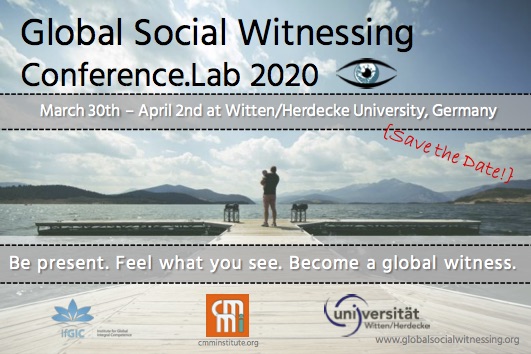 Both Otto and Thomas will be part of the Global Social Witnessing Conference.Lab, March 30th to April 2nd 2020, in Witten/Herdecke, Germany. There, they will continue their inspiring dialogue!
Both Otto and Thomas will be part of the Global Social Witnessing Conference.Lab, March 30th to April 2nd 2020, in Witten/Herdecke, Germany. There, they will continue their inspiring dialogue!
More information: http://www.globalsocialwitnessing.org
Collective Trauma Online Summit: https://collectivetraumasummit.com
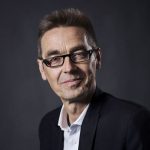
About C. Otto Scharmer
C. Otto Scharmer is a Senior Lecturer in the MIT Management Sloan School and co-founder of the Presencing Institute. He chairs the MIT IDEAS program for cross-sector innovation and introduced the concept of “presencing”—learning from the emerging future—in his bestselling books Theory U and Presence (the latter co-authored with P. Senge et al). He is co-author of Leading from the Emerging Future, which outlines eight acupuncture points for transforming capitalism. His most recent book, The Essentials of Theory U, summarizes the core principles and applications of awareness-based systems change.

About Thomas Hübl
Thomas Hübl, PhD, is a renowned teacher, author, and international facilitator who works within the complexity of systems and cultural change, integrating the core insights of the great wisdom traditions and mysticism with the discoveries of science. Since the early 2000s, he has led large-scale events and courses on the healing of collective trauma, with a special focus on the shared history of Israelis and Germans, and facilitated healing and dialogue around racism, oppression, colonialism, and genocide. He has served as an advisor and guest faculty for universities and organizations, and is currently a visiting scholar at the Wyss Institute at Harvard University.
Gaza on My Mind
Gaza on My Mind
Talking about Gaza can be scary. I have expressed my horror about the savage Hamas attack on Israelis, and the heartbreaking plight of the hostages, but when I criticize Israeli policies and the bombing of Gaza, some of my Jewish friends have called me antisemitic. This is hurtful. To say this is a controversial subject is an understatement. I am not a scholar or historian. I am not Muslim or Jewish. So why do I feel compelled to discuss this?
Though I do not identify with any organized religion, I do identify as an American. Not the nationalistic “my country right or wrong” American, but rather a Langston Hughes style American who sees our country as “the land that never has been yet — and yet must be — a land where every man is free.” I am ashamed of American’s sordid history – the genocide of Native Americans, the slavery of Africans, the unjust treatment of African Americans since emancipation, and other ongoing violations of our principles. l am an American who, like the poet Hughes, has sworn that someday America will be the country where our ideals of liberty and justice for all people will be achieved. It is vital to me that US foreign policy confirms and reflects these ideals. As I once opposed the bombing of the Vietnamese and then the Iraqis, I now oppose the US financed bombing of Gaza and uphold the right of Palestinians to self-determination.
This article explains how I came to oppose US military support of Israel’s war on Gaza, as well as its occupation of the Palestinian territories. My story begins twenty years ago, in September 2003, when I traveled to Gaza to honor the life and death of a twenty-three-year-old American peace activist named Rachel Corrie. She was a volunteer human rights observer with the International Solidarity Movement, a pro-Palestinian group founded by Israeli and Palestinian activists, who were committed to resisting the Israeli occupation by using Gandhian nonviolent practices and protest. When I learned that Rachel had been crushed to death on March 16, 2003, by an Israeli-owned bulldozer as she stood before the home of a Palestinian physician and his family to defend it from demolition, I felt compelled to go there and to understand why.
I called my activist friend Medea Benjamin, co-founder of Global Exchange and Code Pink, to ask if she would come with me to Gaza. Though she had been avoiding involvement in the conflict in deference to her Jewish parents, Medea was now ready to go. I recruited a delegation of seven women, including two Jewish and one Muslim, and Global Exchange organized our itinerary to meet with Israeli and Palestinian human rights groups in Israel, Gaza, and the West Bank.
The purpose of our 2003 trip was to gain insight into the conflict between Israel and the occupied Palestinian territories. My mission was also to establish relationships with a Jewish-owned restaurant in Israel and an Arab-owned restaurant in the occupied Palestinian territories as part of the White Dog Cafe’s International Sister Restaurant program, “Table for Five Billion.” Beginning in 1987 the program had brought delegations of our customers and staff to Nicaragua, Cuba, Vietnam, and the Soviet Union to experience the impact of US foreign policy and work toward a world where everyone (five billion then, and even more now) has a place at the table.
When we arrived in Gaza in September of 2003, our group of travelers sat sipping coffee in a busy outdoor café, much like any European café, in Gaza City. When we heard the hum of an airplane in the distance, I saw alarm on the faces of our Palestinian hosts. On the way to the café, we had seen the burned- out carcass of a car blocking a narrow street in a busy marketplace and been told that it had been hit by an Israeli Defense Force (IDF) missile, killing many innocent bystanders. Even in this peaceful café setting, I saw how people lived in fear in Gaza — called by many “an open-air prison,” from which there was little escape.
Twenty years later, fear has consumed all of Gaza night and day as Israeli fighters unleash the most destructive bombing campaign in modern history, already having used more than twice the firepower of the nuclear bomb dropped on Hiroshima. As many as 27,000 Palestinians have been killed, including more than 12,000 children and 66,000 wounded. No hospitals are fully functional. There is no anesthesia for surgeries. No antibiotics to stave of deadly infections. Families and orphans of those killed are sleeping in tents and on the street. One toilet is available for every 500 people, according to the World Health Organization. Since October 7, over 400 doctors and medical staff have been killed. The UN has lost 142 personnel, the largest number lost in any conflict in history. More than one hundred and twenty journalists have been killed, and the International Federation of Journalists in NYC has accused the IDF of ‘deliberately targeting’ media professionals working in Gaza
One of the most moving experiences for me on our 2003 trip was meeting Rami Elhannan, an Israeli whose 14-year-old daughter had been killed by a Hamas suicide bomber on her way home from school in 1997. After a year of struggling with anger and despair, Rami joined Bereaved Families Supporting Reconciliation and Peace, a group of Israeli and Palestinian families who had each lost loved ones to the conflict. He told us that his life had taken on new meaning as he worked in partnership with Palestinians to stop violence and end the occupation.
Now twenty years later, Hamas has only gained in strength. Their murderous attack on October 7, killing 1200 Israelis and taking 250 hostages is the tragic result of what they have become. What gives me hope is that Rami, even after this outrage, continues his work to end the violence and co-exist peacefully with Palestinians. The reconciliation and peace organization, now called Parents Circle, is co-directed by Rami and his Palestinian counterpart, Bassam Aramin, whose 10-year-old daughter was killed in 2007 by an IDF soldier using a US issued M-16 rifle, as she stood outside of her school.
In a 2023 interview, Rami explained that twenty-five years ago, he had never seen a Palestinian as a human being. But through the Parents Circle he had learned the music, the culture, and the stories of the Palestinians, which he explained had been deliberately hidden from him by the Israeli education system. When asked how to end the conflict, Rami said that the most important word is “respect” and to see Palestinians as equal partners in building a peaceful future.
In 2003, when we arrived in Rafah, a Palestinian city in the southernmost part of Gaza, near the Israeli-controlled border with Egypt, we visited the home of a Palestinian school headmaster Khalil Bashir. We were horrified to find that Israeli soldiers had not only destroyed his groves of date and olive trees and two acres of greenhouses, but the soldiers had also taken over the upper floors of his three-story home as an army base to protect the newly erected homes of Israeli settlers nearby. Despite this unimaginable disrespect, Khalil continued to teach non-violence and peaceful coexistence to his children and students.
In a letter to her mother in February 2003, Rachel Corrie wrote about the people of Gaza:
“I am amazed at their strength in being able to defend such a large degree of their humanity – laughter, generosity, family-time – against the incredible horror occurring in their lives and against the constant presence of death. I am also discovering a degree of strength and of basic ability for humans to remain human in the direst of circumstances. I think the word is dignity.”

We later learned that in 2004 Khalil’s 15-year-old son, Yousef Bashir, had been shot in the back by an IDF soldier. Because three UN officials witnessed this, he was sent to an Israeli hospital where he slowly recovered. Since then, Yousef moved to the US and wrote a book about his father’s dedication to non-violence. In a 2019 New York Times op-ed, he said this about the soldier who shot him: “I wish we could talk. I would tell him that I want to do my part to make peace between our peoples more possible, the way my father taught me. I would tell him that I have forgiven him.”In Rafah, our delegation next went to the place where Rachael Corrie was killed. We stood solemnly before the pile of rubble that marked where she had been crushed under an armored bulldozer driven by an IDF soldier. Prior to her death, over six hundred houses had been destroyed in Rafah, along with Palestinian businesses, including 25 greenhouses, the source of income for three hundred people. In her last email to her father written less than two weeks before her death, 23-year-old Rachel wrote:
“Coming here is one of the better things I’ve ever done. So when I sound crazy, or if the Israeli military should break with their racist tendency not to injure white people, please pin the reason squarely on the fact that I am in the midst of a genocide which I am also indirectly supporting, and for which my government is largely responsible.”
I understand that some readers who identify with Israel may not agree with Rachel’s analysis of the situation, but it’s important to know how she saw it and to admire her willingness to stand up to the powerful forces she viewed as oppressors, as we hope someone would do for us and our families if we were in such danger. Twenty years later, in 2023, I still picture the pile of rubble marking the spot where Rachel tragically lost her life amid the destruction of Palestinian homes and businesses. I am deeply saddened to know that today the rubble has grown to encompass much of Gaza, with over 70% of housing demolished by Israeli bombs, displacing 90% of the population. Untold thousands of Palestinian civilians in Gaza, over a third children and infants, have been crushed to death in their own homes.
In 2003, we saw so many Palestinian children, often dressed in neat school uniforms, their eyes bright and faces curious to meet strangers. They pointed out the bullet holes in their houses and showed us shell casings they had collected during the IDF incursions, and they pointed to the place where Tom Hurtnell, a young English volunteer, was shot in the head as he ran to grab a child who was caught in gunfire. In Hebron, a Palestinian town in the West Bank where four hundred Jewish settlers from Russia had illegally taken residence, we met with Chris Brown from Christian Peacekeepers Team. He explained how his group escorted children to school through army barricades, where the IDF soldiers point guns at them, and past hostile settlers who hurl abuse, and sometimes spit on and physically attack the children. By 2003, over six hundred Palestinian children had died in the conflict at the hands of the IDF or the settlers. We visited a school where the children sang to welcome us, and as we looked at their promising young faces, it was hard not to despair over the sheer hopelessness of their future.
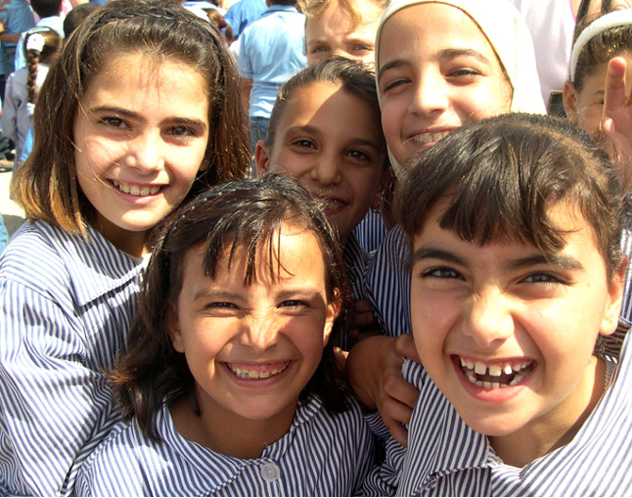
 Palestinian school children passing through an IDF checkpoint on their way to school, Hebron, West Bank, 2003.
Palestinian school children passing through an IDF checkpoint on their way to school, Hebron, West Bank, 2003. I never imagined that twenty years later, against international law, there would be over 700,000 settlers in the West Bank and East Jerusalem occupying 40% of Palestinian land against international law. Just since October, 739 Palestinians in the West Bank, including 309 children, have been displaced, following the destruction of 115 homes. The IDF has armed settlers in the West Bank, giving them impunity to violently force Palestinians from their homes, increasing acts of violence from an average of three a day to seven. Recently, a Palestinian-American teenager visiting his cousins was shot in the head. He is one of 369 killed in the West Bank since October, including ninety-five children.As our 2003 delegation traveled through the West Bank, we saw how the yards of the settlers’ homes were lush and green with well-watered grass, in sharp contrast to the arid, brown, and lifeless Palestinian areas. At a large Jewish settlement near Jerusalem, we even saw people enjoying an Olympic size swimming pool, while the Palestinians were forced to survive on 20% of the available water, even though their population is far greater, and did not have enough water to grow their crops to feed their people.
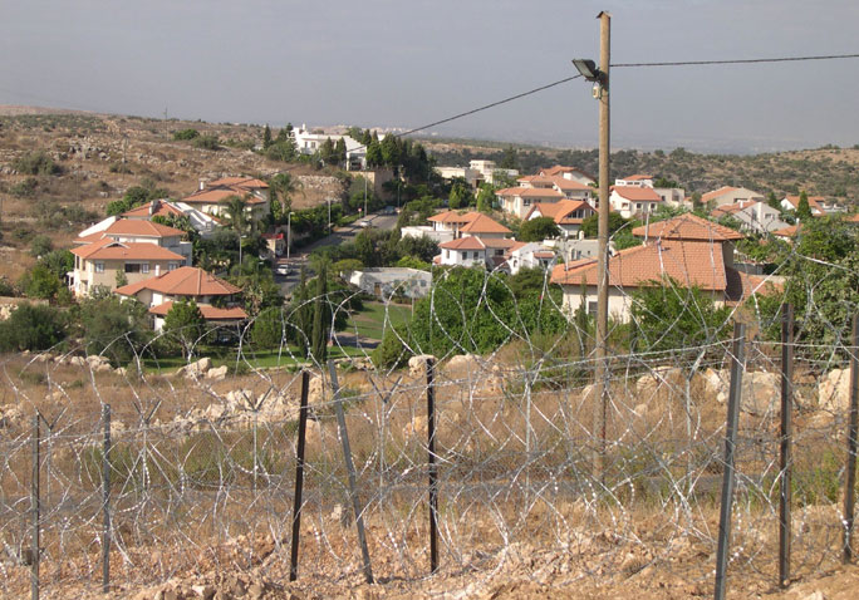
Though this seemed so unfair back in 2003, it would have been unimaginable to think that, in response to the Hamas attack on October 7, the Israelis would cut off ALL water supply to the entire population of Gaza, as well as all food, fuel and medical supplies, leaving Palestinians to die of starvation, dehydration, and disease. Over 70% of the population is drinking contaminated or salty water, according to the UN. Recently, the World Food Program reported, “In Gaza at this moment, literally the whole population is in crisis level of hunger or worse. And of those people, about 26%, meaning one-quarter of the population is literally starving – about 577,000 people.” According to the UN, famine is now “inevitable” following the news that the US and some other Western countries have suspended funding to the UN Relief and Works Agency for Palestinian Refugees (UNRWA) because Israel has accused 12 of its 13,000 employees to have been involved in the October 7 attack. Though nine of the accused have been fired, one has died, and two are under investigation, funding needed to combat the famine that endangers millions of Palestinians has been denied.While our delegation was in Tel Aviv, we told a group of Israeli youth that we were staying with a Palestinian family. Their eyes widened with fear and surprise, as they warned us that we would be raped and murdered because Palestinians were dangerous terrorists. Though I heard Israelis claim that Palestinian youth are taught to hate Jews, this experience made me wonder if Israeli youth had been taught that all Palestinians are terrorists.
When I watched the 2023 film Israelism, produced by courageous young Jewish filmmakers, I finally understood the racist remarks of the Israeli youth we had met 20 years before. According to the documentary, Israeli students, as well as visiting American students, are subject to racist and militaristic indoctrination that teaches them to fear, loathe, and dehumanize Palestinians. On both sides, it is hatred of “the other” that underlies and inflames the conflict.
The Israeli policy of demolishing homes had led to Rachel’s death, and so in 2003 we met with Angela Godfrey-Goldstein from the Israeli Committee Against Home Demolition, where we learned how the IDF was, in violation of international law, demolishing Palestinian homes, their means of income and their cultural institutions, and replacing them with Jewish settlements. One of the most surprising and horrifying parts of our 2023 trip was seeing the frequent IDF checkpoints on roadways where Palestinians were stopped, searched, delayed, and humiliated while waiting for hours in the hot sun or rain. As a result, travel that should take minutes takes hours and even days, separating people from their jobs, schools, friends, and family. An Israeli peace group, Bat Shalom, told us that over sixty Palestinian newborns, unable to get to the hospital, had died at checkpoints. In contrast, modern highways connecting Jewish settlements were “Jews Only,” which reminded me of the “Whites Only” drinking fountains I had been shocked to see as a young girl visiting the US South.
Lately, I have been hearing the term “settler colonialism” in relation to the war in Gaza. I was not exactly sure what it meant, so I checked back in with the Israeli Committee Against Home Demolition and read an October 2023 article by its founder, American Israeli Jeff Halper. In reading this article, I came to understand why Rachel and many thousands of Palestinians have been tragically killed. As I write, the rightwing leadership in Israel is publicly advocating for the permanent displacement of Palestinians and the building of Jewish settlements in Gaza. For me, Halper’s description of “settler colonialism” rings true to what I have witnessed in Palestine, and to what happened in the founding of the US. I want to believe that, lost in our own shameful colonial past, there may have been non-violent settlers in the US who sought peaceful coexistence with the Native Americans, and stood up courageously as Rachel did. Halper wrote:
“Settler colonialism is a deliberate, structured, and prolonged process in which one people not only takes over the country of another – violently by necessity – but seeks to transform it from what it was at the time of invasion into an entirely new entity, a new country reflecting the settlers’ presence, entirely erasing the natives’ presence and history. It is not a “conflict”. There are no “sides”, no symmetry of “violence”. The settler project is a unilateral one which must deny the indigenous population’s existence as a people endowed with rights to their land and identities if it is to claim the country exclusively for itself. Following from that is the need to move the indigenous off their land, killing them, driving them out of the country or confining them to tiny enclaves, so as to settle the land with the settler population itself. Then comes the process of erasure: erasing the physical and cultural presence of the indigenous from the landscape and replacing it with the settlers’ own manufactured history, heritage, national narrative and national identity. After a prolonged process of violent displacement and the pacification of those amongst the indigenous who remain, the settler project concludes quietly. Now the world is presented with a normal, peace-loving, democratic country remade in the settler’s image, and the settler colony fosters a popular perception that it is the “real” country. (Try buying a plane ticket to Palestine.) The process of normalization is complete; any further resistance on the part of the native population is criminalized as “terrorism” and, as such, is effectively de-politicized and delegitimized.”
On February 15, 2003, a month before Rachel Corrie’s death, 25 million people in over 100 countries around the world took to the streets saying NO to George Bush’s war in Iraq. It was the largest peace demonstration in world history. On February 28, Rachel wrote:
“I look forward to more moments like February 15 when civil society wakes up en masse and issues massive and resonant evidence of its conscience, it’s unwillingness to be repressed, and it’s compassion for the suffering of others.”
Twenty years later, as Rachel Corrie hoped, global consciousness is growing. Millions of people around the world are holding massive demonstrations — in London, Tokyo, New York, Rome, Athens, Sydney, Jakarta, Istanbul, Bangkok, Sao Paulo, Bucharest, Paris, Berlin, and Johannesburg — calling for a ceasefire and the liberation of the long oppressed Palestinian people. Many of these protests are organized by Jewish organizations who stand squarely for peace and human rights for all. Israelis, in partnership with Palestinians, have formed groups such as A Land for All and Standing Together and are working on plans for a future of peaceful coexistence in two neighboring states. The current crisis makes them even more determined to achieve their vision.
Having gained the world’s attention, could the tragedy of Gaza possibly provide the opportunity for a turning point in human civilization when the people of the world give birth to a new world order built on the idea that we are all one, with no them and us, and that war is obsolete? On February 28, just a couple weeks before her death, Rachel wrote to her mother:
“I think I could see a Palestinian state or a democratic Israeli-Palestinian state within my lifetime. I think freedom for Palestine could be an incredible source of hope to people struggling all over the world. I think it could also be an incredible inspiration to Arab people in the Middle East, who are struggling under undemocratic regimes, which the US supports. I look forward to increasing numbers of middle-class privileged people like you and me becoming aware of these structures that support our privilege and beginning to support the work of those who aren’t privileged to dismantle those structures.”
In 1995, White Dog Café began holding a Freedom Seder, a celebration of the exodus of the Jewish people from bondage as slaves in Egypt, which we continued every Passover, until I retired and sold the business in 2009. A rabbi would preside, and each year we created a booklet, a Haggadah, to accompany the service, tell the story, and share the ‘ten plagues’ of our time. Often a member of another community that was fighting oppression would also speak. Our purpose was to spread the Jewish message of freedom from oppression for all people — that all people are created in the image of God and deserve to be treated with dignity and respect.
I can understand that for many Jews the actions of the Israeli government are at odds with what they believe are at the heart of Judaism and its wise teachings —hence the protest signs, “Not in My Name.” Young American Jews, who have organized to reclaim Judaism in the spirit of seeing God in all people, embody Rachel’s dream for peace and justice:
Jewish Voice for Peace says, “We imagine Jewish Israelis joining Palestinians to build a just society, rooted in equality rather than supremacy, dignity rather than domination, democracy rather than dispossession. A society where every life is precious.”
If Not Now, a movement led by young Jews, says, “We call on our community to imagine a future beyond “us or them” — where Israelis and Palestinians are both safe: A future of equality, where everyone from the river to the sea has individual and collective rights to safety, the resources they need to live, freedom of movement, and political representation.”
My hope for peace in Israel and Palestine, and for a world where everyone has a place at the table, lies largely with these young people who stand as beacons of light in the darkness. As was Rachel, they are courageous to oppose racism and militarism and call for Israel to be a model of coexistence that the world so desperately needs. If not now, when?
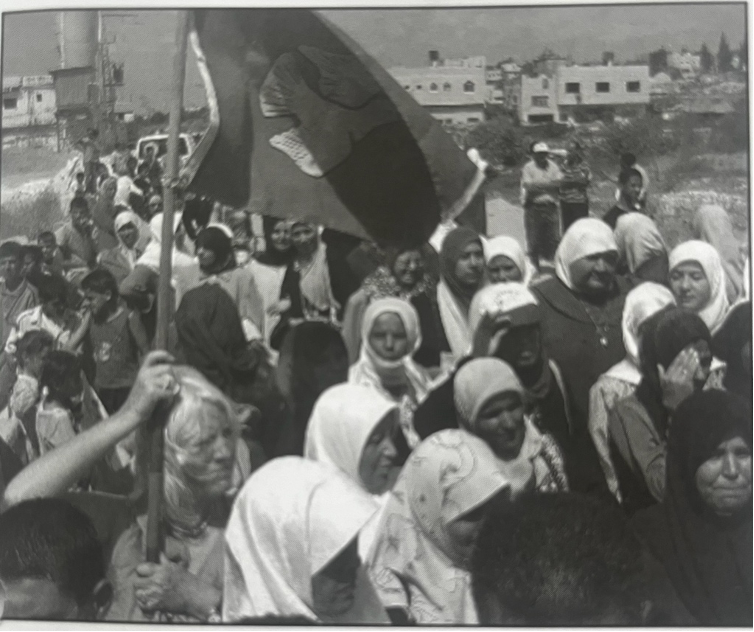 Judy and the delegation of American women joined 200 Palestinian women and 250 Israeli women on September 6, 2003, in Talkarem, West Bank, to protest the Apartheid Wall that separated the villagers from 7000 acres of their agricultural land and 26 wells. The Israeli women brought school supplies to the gate as a gift to the Palestinians. The IDF teargassed those of us on the Palestinian side of the wall. Photographer unknown.
Judy and the delegation of American women joined 200 Palestinian women and 250 Israeli women on September 6, 2003, in Talkarem, West Bank, to protest the Apartheid Wall that separated the villagers from 7000 acres of their agricultural land and 26 wells. The Israeli women brought school supplies to the gate as a gift to the Palestinians. The IDF teargassed those of us on the Palestinian side of the wall. Photographer unknown.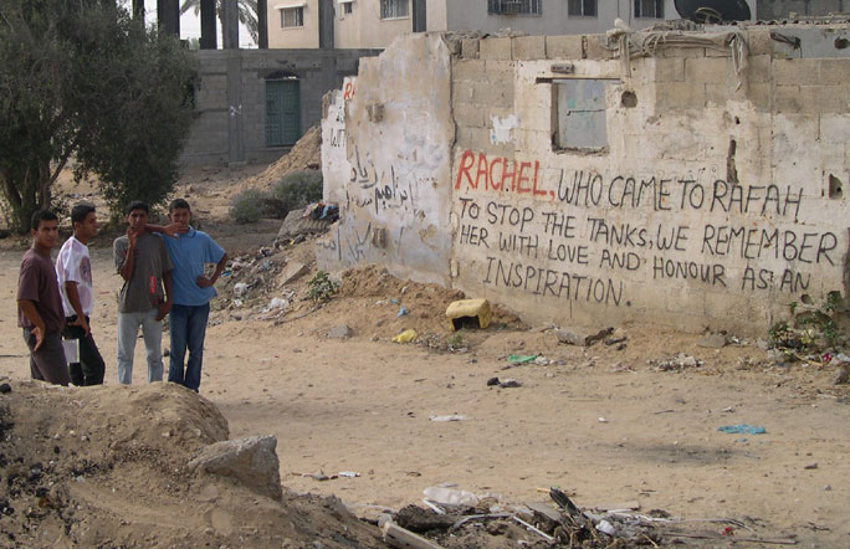
Return to Strength in Openness Contents Page
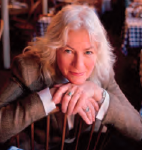
About Judy Wicks
I’m a retired entrepreneur, activist and author working for peace, human rights, and the well-being of all species.
My life-long work has focused on building just and restorative regional economies as an alternative to extractive, profit-driven corporate globalization. Local economies lower the carbons of long distance shipping, create greater equality through decentralized ownership, lower dependance on vulnerable global supply chains, and prepare future generations to survive climate chaos by producing basic needs as close to home as possible.
Now retired from business and organizational work, I am focused on building a sustainable, solar-run 2-acre homestead in Philadelphia, where my daughter and I have turned a lawn into a meadow, orchard and vegetable garden.
I continue to support under-resourced, local entrepreneurs who are helping to build our regional economy.
Currently, my activism is aimed at a ceasefire in Gaza and self-determination for Palestinians.
For more, visit www.judywicks.com.
A Different Kind of Fast
A Different Kind of Fast
featured image | Becca Clark, Pixabay
Fasting can help us to remember our true hunger. At heart, the act of fasting is about growing in relationship to the sacred presence. Experiencing hunger gets us in touch with the desire for something we do not have. It is the longing for it and our deep need. But we can get overwhelmed by our hungers for things, especially in a culture that worships consumerism and in which the divide between rich and poor grows ever wider. Stepping back from this helps us to see what we are really yearning for in our lives.
I think of my habit of clearing off my desk and filing away old papers when I am starting on a new project. If I prolong this task it may slip into procrastination, but the impulse and desire is to remove some of the external clutter, which creates a sense of inner spaciousness as well.
The outer clutter and inner clutter are often reflections of each other. I have fewer distractions from the project I want to be working on, and it makes it a more satisfying process for me. I find this too when I rearrange the furniture in a room: I suddenly get a new perspective. Fasting can create breathing space for a new perspective on our lives. We have been so used to looking at things a certain way, we discover with small shifts there is so much more beneath the surface awaiting our attention.
Fasting from foods is only one kind of fast. There are many other kinds too. We can fast from acquiring more “things,” and excessive consumption, as the physical and material realm, as the materiality of food, and how we understand it, limit it, or explore it differently, becomes a portal to the spiritual. We may find that cleaning the house and preparing a beautiful meal lend themselves to celebratory occasions – different kinds of fasting – and help to lift us from the mundane moments to open us to a deeper connection with God.
In a world where the sacred is infused into the material world, what we release on the physical realm can also impact our interior life. Fasting is preparation, which means clearing out a space for something new to enter.
Fasting isn’t only connected to a physical level. We can also fast from thoughts and patterns in our lives that are life-denying. Fasting creates space in our lives for other- life-giving – thoughts to emerge. Rather than feeling jostled about by so many conflicting internal thoughts or tasks, when we fast, we make room internally for something else, and we are able to breathe more deeply.
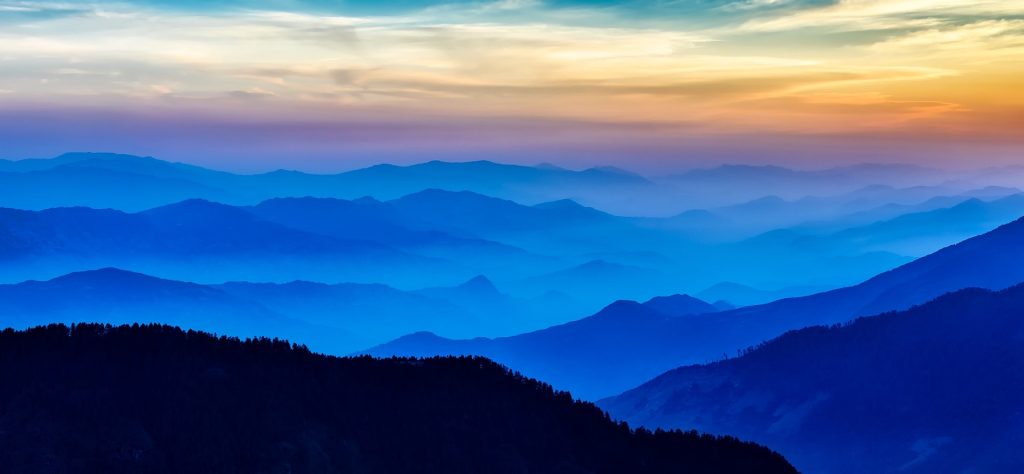
In the Hebrew Scriptures, the prophet Isaiah speaks about fasting as profoundly connected to transformation, both personal and cultural. When we release our life-denying habits and thoughts, we discover a new freedom to live differently. This is an internal freedom not dictated by circumstances. Ultimately this internal freedom leads us to desire for liberation for all beings and Isaiah makes this connection to justice:
Is not this the fast that I choose: to loose the bonds of injustice, to undo the thongs of the yoke, to let the oppressed go free, and to break every yoke? Is it not to share your bread with the hungry, and bring the homeless poor into your house; when you see the naked, to cover them, and not to hide yourself from your own kin? (Isaiah 58:6-7 (NRSV)
As this wisdom text reveals, fasting helps reveal our true hunger and the hunger of others. And in the process of discovering this, we begin to see what is life-giving for us as intimately intertwined with the well-being of the entire Earth community. We don’t fast merely for personal transformation, although this is a step along the way. We fast to widen our vision on ourselves and ultimately to connect to our longings to bring conditions of freedom for all.
Not only does fasting connect us to our true hunger, it has a way of also attuning us to the greater mystery in which we, as the book of Acts says, “live and move and have our being” (17:28). Thomas Ryan deepens our understanding of how fasting functions, writing:
Fasting as a religious act increases our sensitivity to that mystery always and everywhere present to us. It is a passageway into the world of spirit to explore its territory and bring back a wisdom necessary for living a fulfilled life. It is an invitation to awareness, a call to compassion for the needy, a cry of distress and a song of joy. It is a discipline of self-restraint, a ritual of purification, and a sanctuary for offerings of atonement.
I love this litany of the fruits of fasting. When we fast, we make space to see the sacred thresholds shimmering everywhere we go. It brings us more fully present to the world and to those in need. It helps us to heal our wounds and creates room for joy. Atonement is a process of removing obstacles between ourselves and God. Fasting is an intentional removing those things that lead us further away.
I am sometimes asked how we know if we have an authentic encounter with the divine and my answer is always love. When our hearts are expanded and we start to see our fellow living beings as worthy of our care, then we know the sacred has been moving in our hearts.
 One of the early teachings of the Christian church find helpful to understand fasting is from John Cassian. Cassian, an early theologian, writes about what he calls the three renunciations. Renunciations are an intentional giving up of certain patterns or ways of being in the world and one form fasting can take. For Cassian, the first renunciation is of our former way of life and shifting our focus to our heart’s deep desire. He assumes his listeners have perhaps become too invested in pleasing others, in achievements, or other externally focused motivations for how we live. By beginning to intentionally turn our attention inward, we listen for the way holy direction. the sacred pulses in our own hearts call us to live from this
One of the early teachings of the Christian church find helpful to understand fasting is from John Cassian. Cassian, an early theologian, writes about what he calls the three renunciations. Renunciations are an intentional giving up of certain patterns or ways of being in the world and one form fasting can take. For Cassian, the first renunciation is of our former way of life and shifting our focus to our heart’s deep desire. He assumes his listeners have perhaps become too invested in pleasing others, in achievements, or other externally focused motivations for how we live. By beginning to intentionally turn our attention inward, we listen for the way holy direction. the sacred pulses in our own hearts call us to live from this
The second renunciation, Cassian says, is giving up our mindless thoughts. Our minds are full of chatter all the time: judgments about ourselves and others, fears and anxieties over the future, overwhelm at world issues, the stress of illness, stories we tell about our lives, regrets over the past, imagined conversations with others, and more. It can be exhausting to follow all these trails of anxiousness. Intentional thought and meditative practice have always been about calming the mind so that the spirit can listen to another, deeper, truer voice. In the beginning we may need to start by focusing our thoughts on an object of attention, as in centering prayer where we choose a sacred word to bring our awareness back to the divine. As we continue this practice, however, we eventually may find ourselves not needing to focus thoughts anymore, but simply listening to the heart’s wisdom. We begin by mak- ing the conscious choice to listen by quieting and clearing out the babble and prattle of our minds so that the heart’s shimmering can become the focus.
The third renunciation I find the most powerful. We are called to renounce even our images of God so that we can meet God in the fullness of that divine reality beyond the boxes and limitations we create. So many of us have inherited harmful images of God taught by others that are not fruitful to our flourishing. Images of a judgmental God, a vending-machine God, a capricious God, a prosperity God, a God made in the image of whiteness. We project our human experiences onto the divine. This is a natural impulse, but our soul’s deepening depends upon our freeing ourselves from these limiting images so we might have an encounter with the face of the sacred in all of its expansiveness and possibility. We might feel called to fast from these life-denying images to open our hearts to something wider.
We do not have to retreat to the desert or join a monastery to find this path of deepened intimacy with God. We each have the opportunity to choose this inner work of discerning what we hold onto and what we release at every season of our lives. We each have the choice to make. Sometimes this kind of radical simplicity accompanies a move, for example, when downsizing from a family home to an apartment. Sometimes we are forced by circumstance to change our outer life, perhaps due to illness or taking care of a sick parent. This inner transformation we are all called to seek.
One of the beautiful aspects of the Christian liturgical cycle is that the call to reflection and intensified spiritual practice returns again and again each year and meets us wherever we are. The purpose of these acts of letting go is always in service of love. When we fast out of a misplaced sense of competition or a diet mentality, we lose this focus and it becomes something that distorts reality rather than clarifies it.
When we fast, we stand humbly in the presence of the sacred and admit our humanity. We allow ourselves to be fully vulnerable and ask for the support in transformation we all need. We do not fast by our own sheer will, but by seeking the ground of being that supports and nourishes us as we grow.
One of my favorite scripture passages is from the prophet Isaiah:
Now I am revealing new things to you, things hidden and unknown to you, created just now, this very moment. Of these things you have heard nothing until now. So that you cannot say, Oh yes, I knew this. (Isaiah 48:6-7)
Ultimately, we fast so as to clear space within our minds and hearts and souls to await what holy newness is being revealed to us and to recognize it at work, as Isaiah says, “Created just now, this very moment.” God is at work moment by moment, bringing new life to birth in places we did not expect. I love of that passage, the second part which reminds us that the cynical part of our minds, which wants to say that we’ve seen it all, that nothing can surprise us any longer, is too narrow to witness what is unfolding right now.
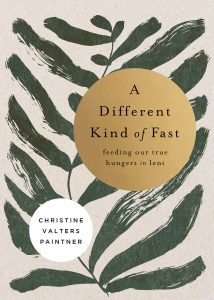 My hope is that this will be an invitation for you to expand your concept of what fasting might mean for you and the gifts it has to offer, a way to witness those things hidden and unknown. Not just to stop eating chocolate, but to fast from things like “ego-grasping” or control, so that, in yielding yourself, a greater wisdom than your own is revealed.
My hope is that this will be an invitation for you to expand your concept of what fasting might mean for you and the gifts it has to offer, a way to witness those things hidden and unknown. Not just to stop eating chocolate, but to fast from things like “ego-grasping” or control, so that, in yielding yourself, a greater wisdom than your own is revealed.
We become aware of and fast from destructive patterns in our lives and direct our attention and energy toward what is life-giving, toward our true hunger and the feast. We let go of something depleting so we have more space to embrace what is life-giving and to nourish our true hunger.
And then perhaps from these Lenten fasts, we will arrive at Easter and realize those things from which we have fasted we no longer need to take back on again. We will experience a different kind of rising.
Reprinted with permission from A Different Kind of Fast: Feeding Our True Hungers in Lent by Christine Valters Paintner copyright © 2024 Broadleaf Books.
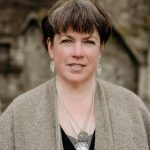
About Christine Valters Paintner
Christine Valters Paintner is the online abbess at Abbey of the Arts, a virtual global monastery without walls, offering retreats, classes, books, and resources to nurture contemplative practice and creative expression. A writer, artist, spiritual director, retreat facilitator, and teacher, she earned her PhD in Christian spirituality from the Graduate Theological Union at Berkeley and is a Registered Expressive Arts Consultant and Educator (REACE). Paintner is author of The Artist’s Rule: Nurturing Your Creative Soul with Monastic Wisdom. She and her husband, John, live on the west coast of Ireland, where together they shepherd Abbey of the Arts and lead pilgrimages. (Photo credit | Julia Monard)
Die Before You Die | A Dialogue on Death and Rebirth
Die Before You Die | A Dialogue on Death and Rebirth
featured image | Every 17 December, the night of Rumi’s death, thousands of people from all around the world gather to celebrate Seb-i Arus, his ‘Wedding Day’, his reunion with his Beloved, with the Divine. Photo | Hulki Okan Tabak
Hannes Schumacher (HS) | What sparked my enthusiasm for this conversation was the title of a presentation you gave recently at the University of Birmingham: “Die Before You Die”—is that not a proper title also for our dialogue? We had a spontaneous conversation via phone when I found myself surrounded by ferocious mountains in the countryside of Greece with a fragmented internet connection. Drenched in loads of laughter we talked about death and nothingness, about our common interests in Sufism, Heidegger and the Kyoto School, about my Ayahuasca trip in Ecuador, about contemporary permaculture and traditional medicine in Nigeria … What I somewhat missed—haha—is the Ifá conception of death: Could you please explain to me what is death according to the teachings of Ọ̀rúnmìlà and where you see a close connection to the Sufism of Rumi?
Emmanuel Ofuasia (EO) | Thank you Hannes. It is a rare privilege to be able to converse over thousands of miles with a being that you may never meet in person. But for the advancement of scholarship, the words of Carl Jung ring through: “Do not be bothered when you find you find yourself alone. If you do your work conscientiously, unknown friends from far away shall seek you.” You have sought me following my discussion on the view of death by Ọ̀rúnmìlà and Rumi which was a talk delivered to the Birmingham Centre for Philosophy of Religion on September 21, 2022.
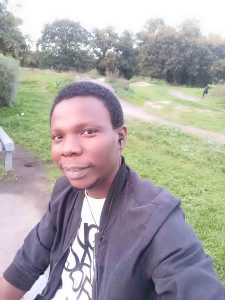 I was intrigued by the fact that among the Abrahamic monotheisms, the norm is to love God and/or his messenger, live the moral life initiated by that love and aim for eternal life. For these two sages that I encounter, it is the topic of death that seems paramount for them.
I was intrigued by the fact that among the Abrahamic monotheisms, the norm is to love God and/or his messenger, live the moral life initiated by that love and aim for eternal life. For these two sages that I encounter, it is the topic of death that seems paramount for them.
Allow me to inform you that the topic of death for these two scholars, really is that there is nothing like death since reality is more than the physical with the capacity to transcend physical extinction. Whereas the one is certain that there is reincarnation, the other is not. However, the common denominator is that persistent thinking about death has the potential to alter our agency as well as how we see the world. In a particular verse of Rumi:
I died as a mineral and became a plant,
I died as a plant and rose to animal,
I died as animal and I was man,
Why should I fear?
When was I less by dying?
Rumi is a Sufi and highly respected Islamic scholar. His idea of reincarnation is tied to the fact that we need not fear death since it is through death that we graduate to a higher consciousness in the chain or hierarchy of being. An important point of departure of which I am unsure is if Rumi endorses that humans can return as humans. It is also doubtful if Sufi Islam endorses such an outlook wholly. I say this because if the Sufi take such a bold move, then they contradict the belief in the Last Day upon which Allah will mete out judgment to transgressors. So, if one has lived more than one life as a human, clearly such is beyond the jurisdiction of Islamic tenets, some of which the Sufi hold on to.
On the other hand, the notion of humans reincarnating and taking up the memory of someone from a previous life is replete among the Yoruba and this is a view also championed by Ọ̀rúnmìlà. I need to however point out that the influence of Euro-Christian civilisation and Arab-Islamic invasion into African indigenous episteme has led most Africans to rebuff their traditional beliefs openly even when they still hold these beliefs dearly.
The discourse on death between Ọ̀rúnmìlà and Rumi however has a common ground: constant meditation on death shapes action or agency and therefore their entire living. And when you consider how these two scholars arrived at this point without ever seeing one another, it becomes lucid that indeed, rationality is universal. Do you agree with this?
HS | Yes, I think I get your point. This contradiction between the doctrine of reincarnation (e.g. in the teaching of Ọ̀rúnmìlà) and the Day of Judgment in orthodox Islam probably has led to many conflicts against and among the Yoruba. Your point—as I understand it—is to argue for a genuine syncretism of Ifá and Islam based on the Sufism of Rumi, or at least to see him as a messenger between conflicting sides. I believe that Sufism is a promising alternative, not only in Nigeria but in many places all around the world. In your presentation you also cited Ibn Arabi:
Generally speaking, each person necessarily sticks to a particular belief concerning his Lord. He always goes back to his Lord through his particular belief and seeks God therein. Such a man positively recognizes the Real only when He manifests himself to him in the form recognized by his belief. But when He manifests himself in other beliefs, he flatly refuses to accept Him and runs away from Him. In so doing, he simply behaves in an improper way towards God, while imagining that he is practicing good manners (adab) towards Him.
(I have to add that this passage is, of course, very male-oriented. The gender of the God and the believer, in my view, belongs to the very “form” that Ibn Arabi talks about.)
EO | There have been no violent confrontations between Ifá priests and Sufi scholars in Nigeria. The difference in their ideology concerning death is just that the Sufi hold on to the pillar of Last Day even when the reality of cases or instances of reincarnation stares them. This is what marks the Yoruba Ifá priests apart.
I should point out to you that there are some Sufi scholars in Nigeria who see Ọ̀rúnmìlà even as a prophet sent by Allah years before Prophet Muhammad. Their argument is that even Ọ̀rúnmìlà could be a muslim and there are Ifá verses that are suggestive of this. This has however created a divide.
On the one hand there are those Muslims who claim that Ọ̀rúnmìlà is a muslim and subordinate to Prophet Muhammad. On the other hand, there are Ifá priests who argue that such cannot be the case.
Now, concerning the male image of God, the passage you quoted is from Ibn Arabi. However, I am one of those who claim that we cannot be certain of God’s sex but it is no more than mere ascription the same way we gave God power, love and knowledge in the superlative senses only to end up with theodicy. In Yoruba linguistics, there is no pronoun for He/She/It that is indicative of sex. What obtains is just a letter “O.” It is the context in which the utterance is made that the sex of the subject/object is known, not without.
This is starkly different from the Abrahamic monotheisms where they claim God cannot be apprehended with the physical eyes but still found God as male.
Ọ̀rúnmìlà

Ọ̀rúnmìlà, also known as Orunmila or Orúla, is a significant deity in the Yoruba religion, which is primarily practiced in West Africa, particularly among the Yoruba people of Nigeria, Benin, and Togo. Ọ̀rúnmìlà is considered one of the most important Orisha (deities) in the Yoruba pantheon and is associated with divination, wisdom, and fate. In Yoruba mythology, Ọ̀rúnmìlà is believed to have played a crucial role in the creation of the world. He is considered one of the “Irunmole,” a group of divine beings who aided in the process of creation. His knowledge of the sacred verses and divination is said to have been bestowed upon him by Olodumare (the Supreme God).
Mowlānā Jalāloddin Balkhi (Rumi)
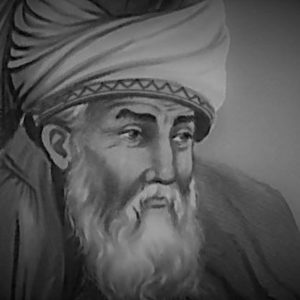
Rumi, is one of the most celebrated and influential poets, mystics, and spiritual teachers in the history of Islamic literature and Sufism. He was born on September 30, 1207, in Balkh, which is now in modern-day Afghanistan, and he passed away on December 17, 1273, in Konya, Turkey. Rumi’s life and works have left an indelible mark on both Persian and world culture, earning him the title of “Mowlānā,” which means “our master” in Persian. Rumi’s poetry, written in Persian, is renowned for its profound spiritual insights, themes of love, unity, and the divine, as well as its lyrical beauty. His most famous work, the “Mathnawi” (or “Masnavi-ye-Ma’navi”), is often considered one of the greatest pieces of mystical poetry ever composed.
Rumi was a prominent figure in the Sufi tradition, a mystical branch of Islam. His poetry and teachings emphasize the importance of seeking a direct and personal connection with God, often through love and devotion. Rumi’s approach to spirituality transcends religious boundaries and speaks to the universal human longing for divine union.
HS | Beautiful. Do you have in mind a resolution of the contradiction between the doctrines of the Last Day and reincarnation in Nigeria? Rumi is a great authority but he is highly suggestive here. Or do you intend to maintain the contradiction for the sake of a more profound idea of death?
EO | I must begin by saying that for the Yoruba belief system in which Ọ̀rúnmìlà is seen as a religious, spiritual and philosophical authority, there is nothing like the Last Day. Rumi, even though a muslim who entertains the possibility of reincarnation, allowed the belief in the Last Day—one of the cardinals in Islamic faith—to override his Sufi notion of possible reincarnation. My own point however is that I was looking at how much they focused on death as the pathway to guide their agency for an afterlife.
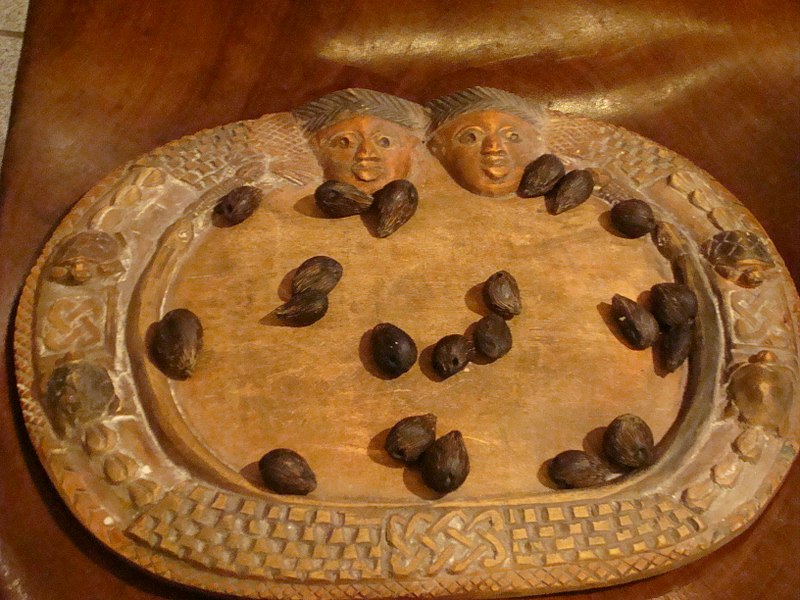
Heidegger sees death as nothing but part and parcel of us. The prize for being alive. That which is within us waiting to engulf us as soon as we gush in the first stream of oxygen. So I agree with you that through death we are able to consider more profoundly, aspects of life which we may not wish to entertain or consider.
HS | Like in Anaximander’s fragment:
Whence things have their origin, there they must also pass away according to necessity; for they pay recompense and penalty for their injustices, according to the ordinance of time.
Ọ̀rúnmìlà’s idea of reincarnation reminded me of this: death is like a leak in the great ark of life, reconnecting us with the furious ocean whence we dwell and strive.
Emmanuel, what I keep on noticing during our conversation is your interest in rationality whereas I am more intrigued by the irrational (perhaps due to our different cultural backgrounds?) By analogy, your idea of death is a continuous contemplation of our human finitude, whereas to me death is a mystical experience. ‘To die before you die,’ in my view, is not only to contemplate about one’s death but to experience it in all its terrifying depth, but also once again to be reborn into a new light, a wholly different vision of the self and of the world.
In Sufism, this idea is addressed in the concept and practice of fanāʾ which is commonly translated as the annihilation of the self. Mansur Al-Hallaj (858-922 CE)—a more controversial figure in Islam—was executed for uttering the words “I am the Truth” (ana’l-Haq), an utterance which his opponents understand as a blasphemous identification with God. Al-Hallaj’s supporters, on the other hand, see his life and work as the realization of fanā: by killing his individual self, his limited personality, he ultimately unified with the unlimited self of God. In another passage Rumi writes:
‘I am the Truth’ on the lips of Mansur [Al-Hallaj] was the light
‘I am God’ on the lips of Pharaoh was a lie.
When the Shaykh [Al-Hallaj] said ‘I am God’ and carried it through,
he throttled all the blind.
When a man’s ‘I’ is negated from existence, then what remains?
Consider O denier.’
What is at stake here, is neither death per se, nor its contemplation, but the experience of ego-death during one’s lifetime.
EO | First, allow me to point out that we are both rational in our dealings. We are employing logic and arguments to reinforce our claims. This means no one’s position is more superior or rational than the other. Second, allow me to stress once again that I am also deeply motivated to undertake traditional African religion from the perspective of process theology, of which we had both briefly talked about over the phone. Now, here is the catch: experience is central to process metaphysics, the foundation of process theology. All things experience and it is this experience that informs how we codify and organise ourselves as entities like no other in the actual world. On this note, the claim to experience death is used loosely by you and truth is only the living can consider death and its mystical accidents or ingredients on behalf of the dead. So, to “die before you die” as used by me in the ideas of Ọ̀rúnmìlà and Rumi is that the consistent REFLECTION not EXPERIENCE on death shapes one’s relation to self, others and the world. It need not be a wholly new or different reflection or perspective. It merely needs to command reflection on the agent that the reality of death, which CAN NEVER BE EXPERIENCED can inform a better view of life.
I see that your use of words and thoughts on the subject matter is based on the concept of fanāʾ and Mansur’s. This is like moving beyond the scope of the present discourse since it centres on Rumi. However, if what is at stake is ego-death as you claim, then at what point does one, personally claim to have arrived at this state of ego-death? Is it posterity that confers such on an individual? Did Rumi and Mansur attain ego-death according to themselves or is it posterity that confers these on them? These distinctions are important for the present discourse. Death is not a thing to be experienced. However, contemplation and meditations on the subject can make one take life more simply. These are the overriding messages from Ọ̀rúnmìlà and Rumi. The notion of experience of ego-death in one’s lifetime as you conclude is another subject matter on its own. This would command some justifications not from Sufism but Buddhism.
HS | Since I participated in an Ayahuasca ceremony in Ecuador, I no longer share these concerns. Ayahuasca in the regions of the Amazon is considered as a sacred medicine that helps us reconnect with nature and experience Being in itself, which can be very terrifying.
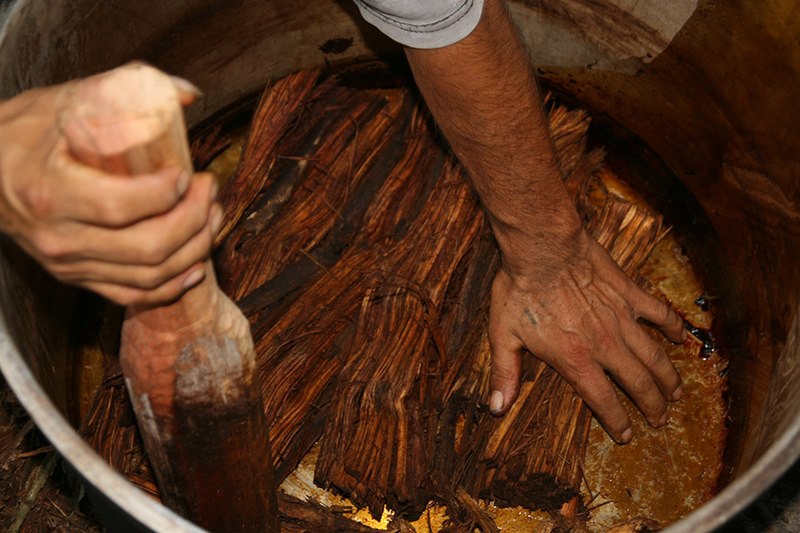
After drinking from the potion, I slowly drifted on the floor until the first “visuals” would overtake my consciousness. These highly synesthetic impressions are so sensitive that the soft clicking of a shaman’s lips while speaking, for example, would lead me into wholly different regions such as the unfolding of history, or the food I ate last week, or me reliving the birth of my child both from the mother’s and the child’s perspective. Turning my body to the left would raise my problematic with Trinitarian elements in the spiritual spheres of Latin America, turning to the right would spark my fear and simultaneous excitement to rise higher into burning light …
Inspired by the cosmic poetry of my fellow participant Gabriel, I tried out different languages and my German mother tongue led me into the concentration camps of Auschwitz. Me myself a prisoner I was tortured with medieval torture instruments, with my arms and legs spanning over the entire ceremonial house, when my idea arose that the two shamans—before so nice and calm—intended to kill me. Second, when Gabriel began to move around aggressively while I sank into the ground, I felt that the ceremony had gone terribly out of control and we should try to reach out for some medical help. However, the rest of the night turned out rather calm and I had deep insights into my expanding consciousness and its mutual entanglement with the entire world, until warm sunlight would bring me back to a new life, spiraling in nature’s orchestra.
True, I did not literally die, I was terribly afraid to die, and perhaps this is all. And yet, when I recall that night at the ceremony, I cannot help but remember that I died: it is a tremendous paradox within the flow of my life which turned out irreducible to any other explanation. Of course, you may argue that all this is highly subjective, after all only a matter of psychology, indeed, I have my doubts in it as well. But I claim that there are such altered states of consciousness in which we may experience our own death, at least from a subjective perspective.
EO | What you witnessed cannot be categorized as death experience. Existentially, if you died, you would not be here having this conversation over thousands of miles with me and never ever meeting me. It is a religious experience and like William James once warned us, there are many regions of consciousness that exist aside from the conventional. On page 300-1 of his 2002 edition of his Varieties of Religious Experience, James said:
Our waking consciousness, whilst all about it, parted from it by the filmiest of screens, there lie potential forms of consciousness entirely different. We may go through life without suspecting their existence, but apply the requisite stimulus, and at a touch they are there in all their completeness, different types of mentality which probably somewhere have their field of application and adaptation. No account of the universe in its totality can be final which leaves these other forms of consciousness quite disregarded.
I need to tell you that I agree with James on this and I cannot deny that you had an experience that is not in waking consciousness. What you experience is also why Sextus Empiricus had related that we are only aware of our own mental states:
For each person is aware of his own private pathos [affections], but whether this pathos occurs in him and his neighbor from a white object neither can he himself tell, since he is not submitting to the pathos of his neighbour … And since no pathos is common to us all, it is hasty to declare that what appears to me of a certain kind appears of this same kind to my neighbor as well.
Yes, I cannot enter into your pathos and you cannot enter mine. On a rational and deeper level of reflection, you may have witnessed another dimension to consciousness. Your description does not come close to near death experiences or out of body experiences. You did not die Hannes. You only experienced reality from another dimension. What I can confidently say is that the experience that you had that night currently lacks vocabulary and parapsychology needs to be given more opportunity to express itself for cases as yours. You had a “conscious experience” beyond the normal, conventional waking consciousness.
I am a big fan of personal experience and this is one of the reasons why I chose to major in Metaphysics—if I cannot change society or the world, at least I should be able to study ways through which I can position myself to cope with whatever the society or the world throws at me. The problem we have is that there is a strict censorship pertaining to the kind of knowledge that can be published and taken as “scientific.” This is where the problem lies. On this account, some experiences, very insightful and relevant, are usually left out of scope. This is why I have the deep conviction that as humans we are not operating with our mental faculties at the optimum level. In fact, we barely use it.
So on this note, I challenge you to see yourself as studying yourself. See your experience(s) as ways that yourself keeps unfolding you to seeing yourself.
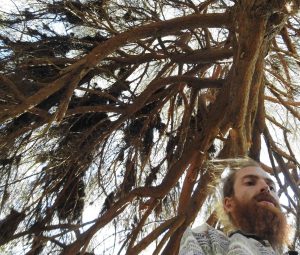 HS | I find it interesting how you conflate the discipline of metaphysics with personal experience: while metaphysics investigates the nature of the absolute, i.e. a knowledge which ranks higher than objective facts, personal experience can be terribly subjective: you seem to draw a circle here which from my point of view is very stimulating. By investigating ourselves, we learn a lot about the world around us, and most importantly about the cultural biases we inherit. If we are able to erase these cultural biases not only theoretically but also in practice, the study of the self becomes the study of the absolute but from an inside perspective.
HS | I find it interesting how you conflate the discipline of metaphysics with personal experience: while metaphysics investigates the nature of the absolute, i.e. a knowledge which ranks higher than objective facts, personal experience can be terribly subjective: you seem to draw a circle here which from my point of view is very stimulating. By investigating ourselves, we learn a lot about the world around us, and most importantly about the cultural biases we inherit. If we are able to erase these cultural biases not only theoretically but also in practice, the study of the self becomes the study of the absolute but from an inside perspective.
This is another thing I learned from Ayahuasca: I am nothing, I am everything. But still I am this vulnerable, limited existence with its memories and dreams.
I grew up in a cultureless society in southern Germany where a merely formal atheism is paired with a hostile Calvinistic moral. In return, I broke with these cultural biases and went to live in various locations in the Global South in search of different perspectives which I found and adapted to some degree. But we also have to see how such movements to the opposite extreme are still triggered by the original biases, and ask how they can be relativized as well. May I ask how are your experiences in a very different cultural environment?
EO | Allow me to relay that in the midst of my philosophical-spiritual journey, I have adapted some aspects of Darwinism, especially the topic on survival of the fittest. It is not the wisest, strongest, meanest, that survives. It is the one with the ability to adapt to the changes in the environment. I have brought this conviction to my living and interaction practices to almost everywhere I find myself.
I have a background in Christianity which I had broken from since I find no point reading a Bible that teaches me that God created light before the sun or that there is Heaven or Hell when reincarnation is more real. I moved to investigate traditional African religion and I realise that they have nearly all the answers to my puzzles rather than the Abrahamic monotheisms. Nevertheless, I keep a good relationship with Muslims and Christians, but I do not let them convince me into their faith much as I do not bother them about mine.
An important point I understand is that no one is making it out of this place alive. Live and let live! My ontology, my spirituality works for me but I see people around me who seek to tap into another person’s spirituality through what they call religion. I cannot change them. My ideas are enough for me and I adapt them to wherever I find myself. Of course, whoever comes to me can only be made to think and reflect on their place in this doomed existence of ours. I cannot foist or even pass my beliefs and modus operandi to them. Spirituality is like an electric pole passing through a street. Anyone can tap into it from their plots. Why would I want anyone to “tap from my own tapping” (i.e. religion) when they can experience and manifest their god-like features?
Return to Ageless Spirit Contents Page
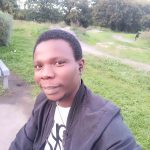
About Emmanuel Ofuasia, PhD
Emmanuel Ofuasia took his PhD in Philosophy in March, 2023 and teaches philosophy at the Philosophy Department of National Open University of Nigeria. He specializes in: Process Ontology; African Philosophy of Religion; Animal Rights; African Logic; and Ifá Studies. He is widely published in these areas and has received local and international grants from organizations and institutions such as: Birmingham Centre for Philosophy of Religion in conjunction with the John Templeton Foundation; Culture and Animal Foundation (CAF); Institute of African and Diaspora Studies (IADS) in the University of Lagos, Lagos. He is currently working on a book that will be first to offer a process-relational account of African metaphysics.
